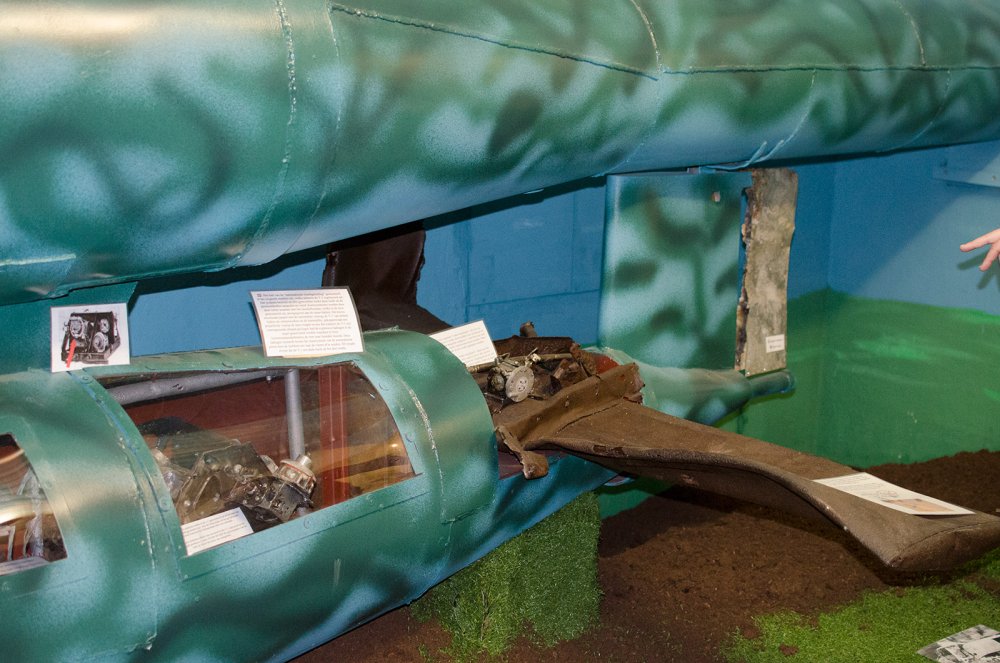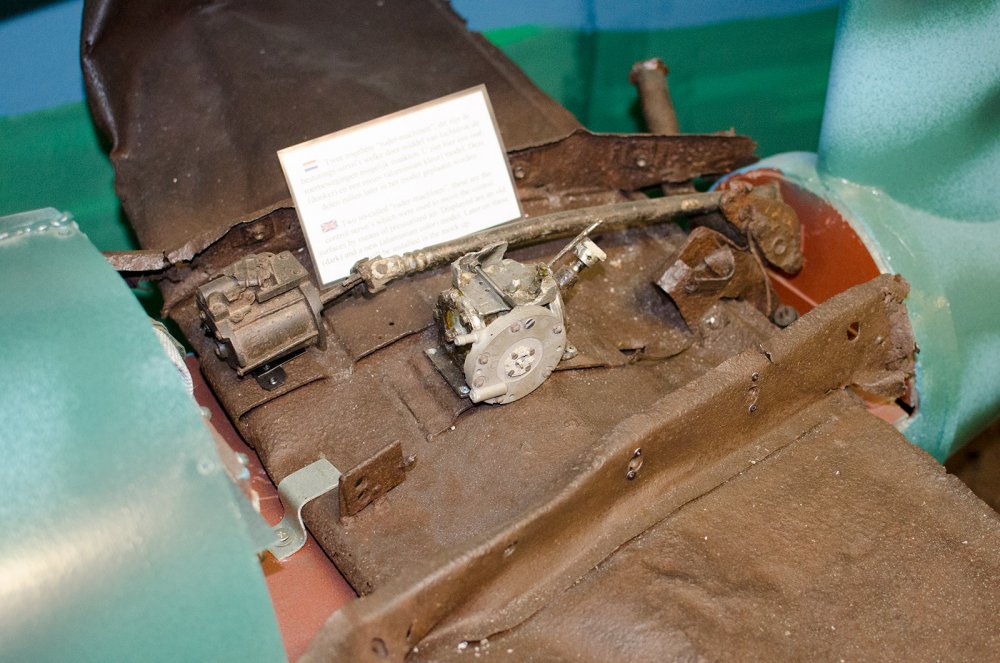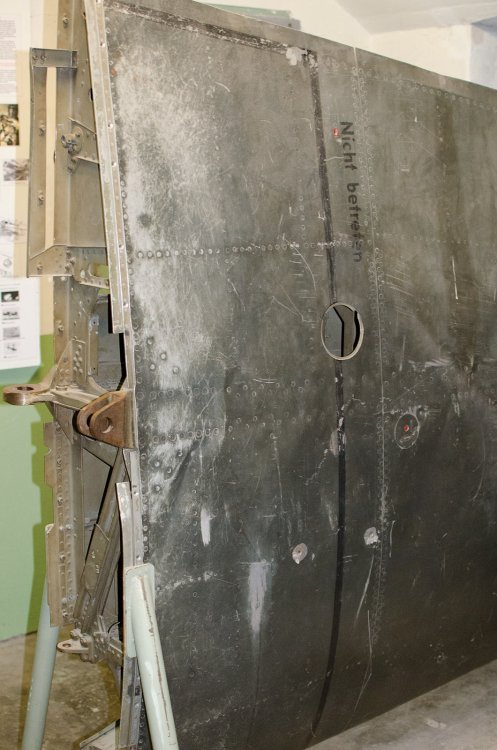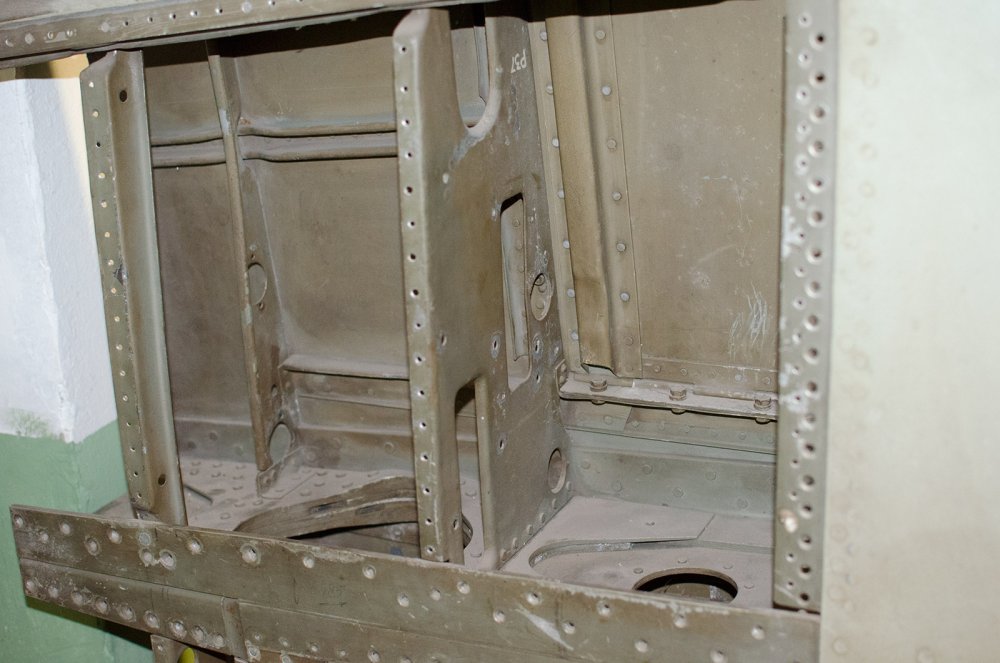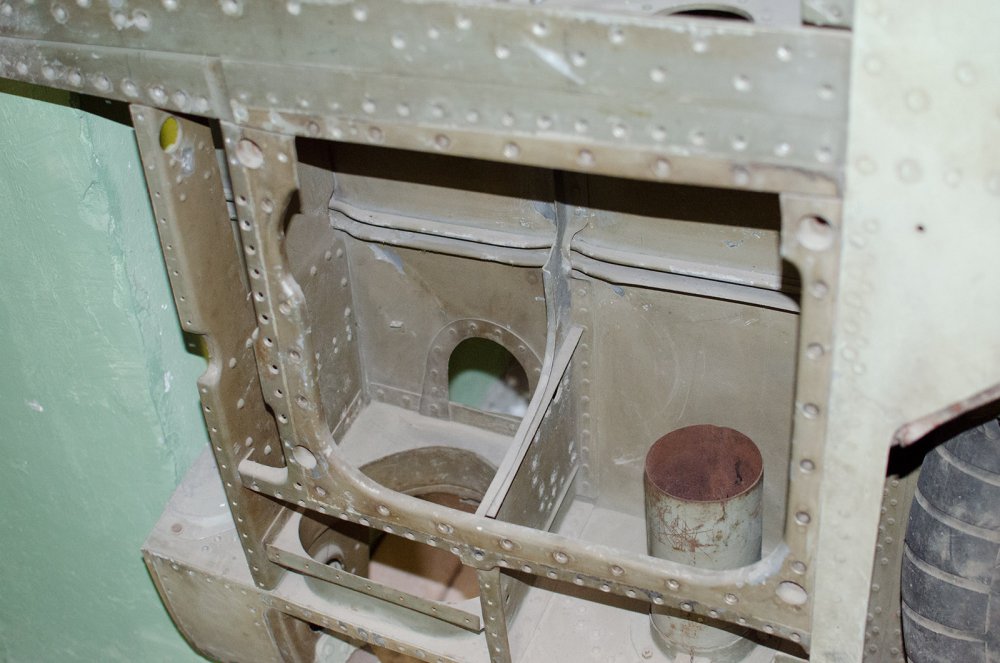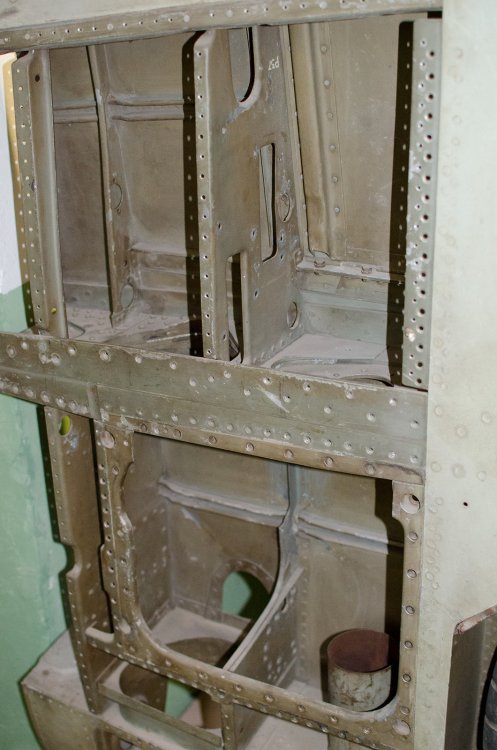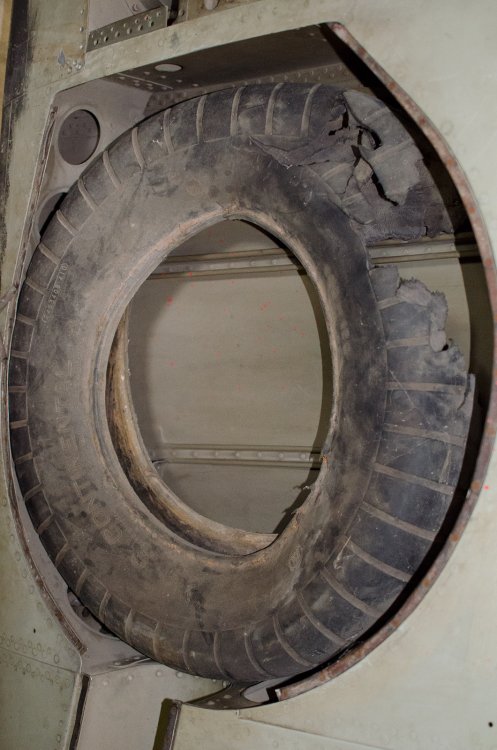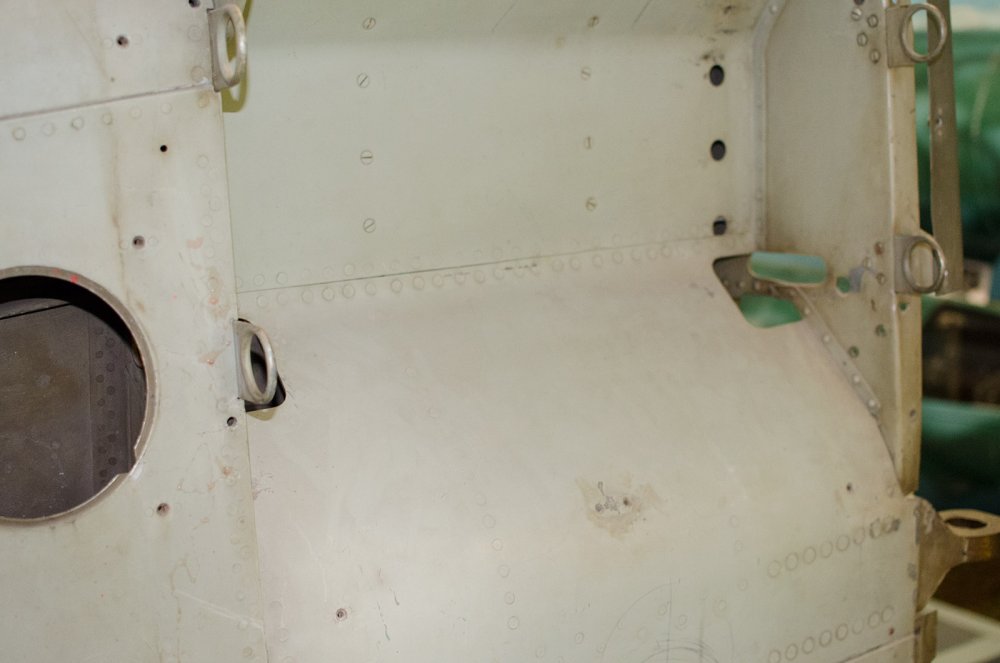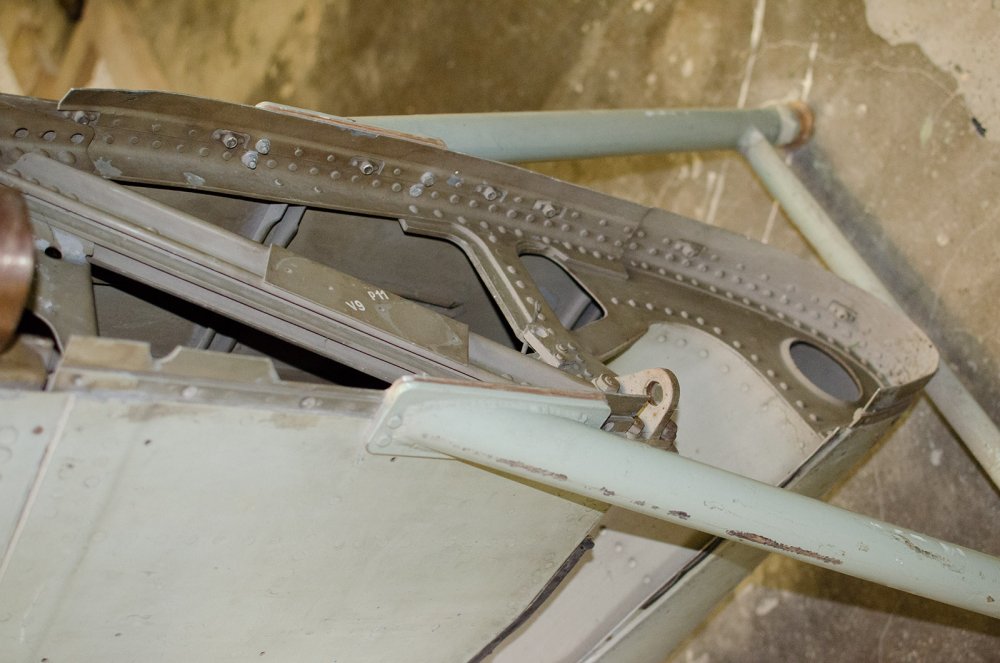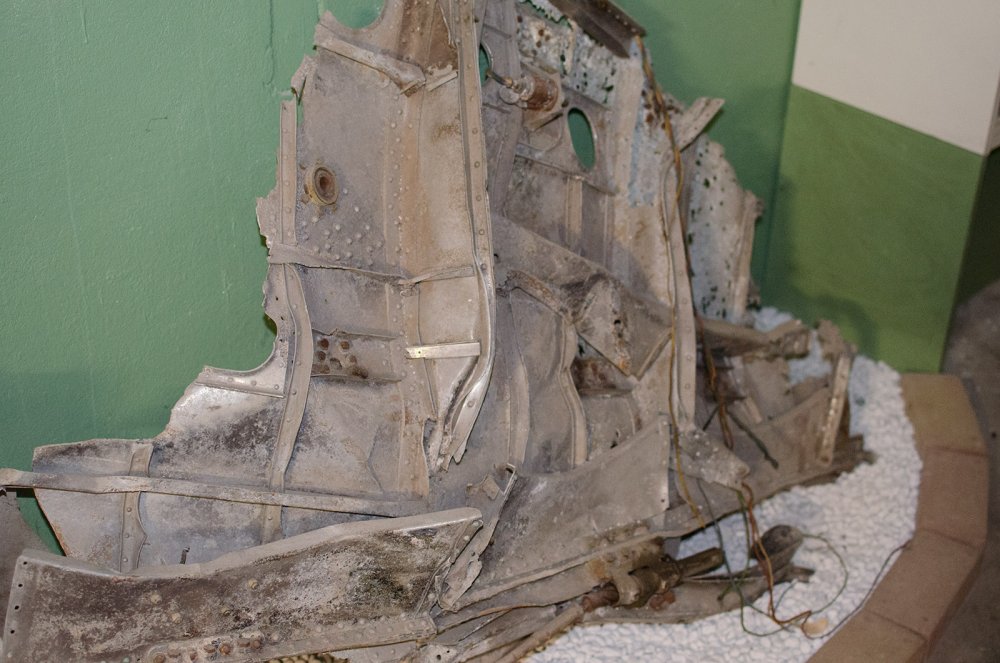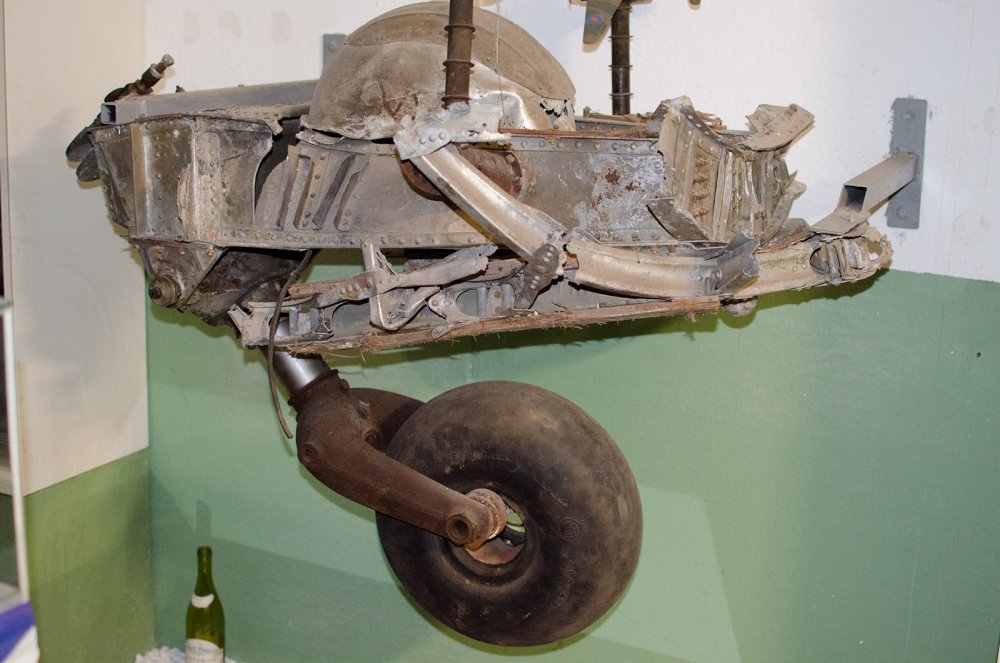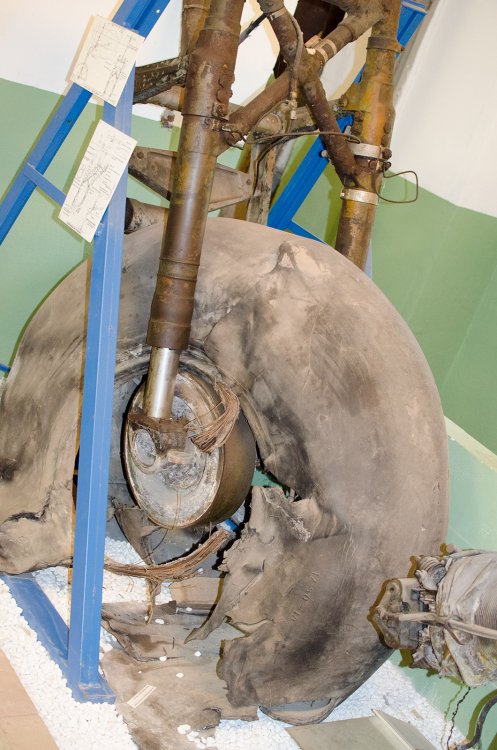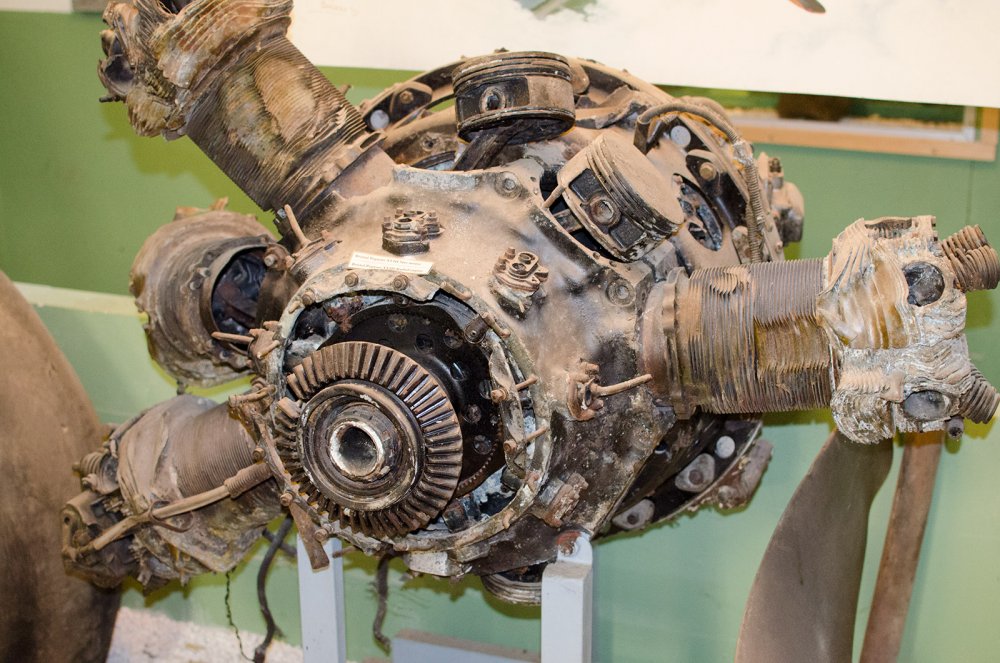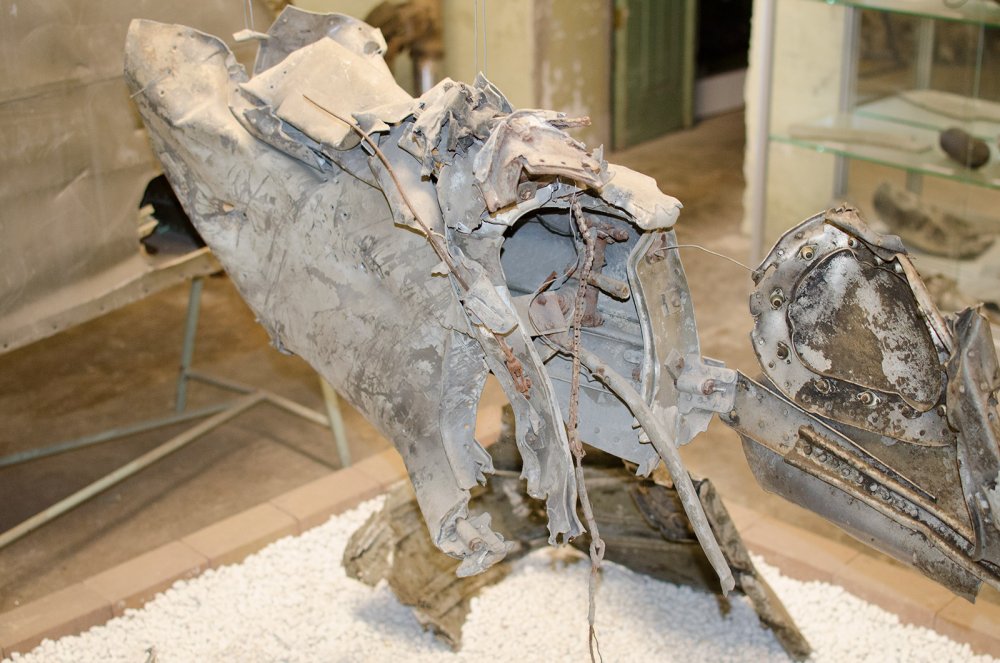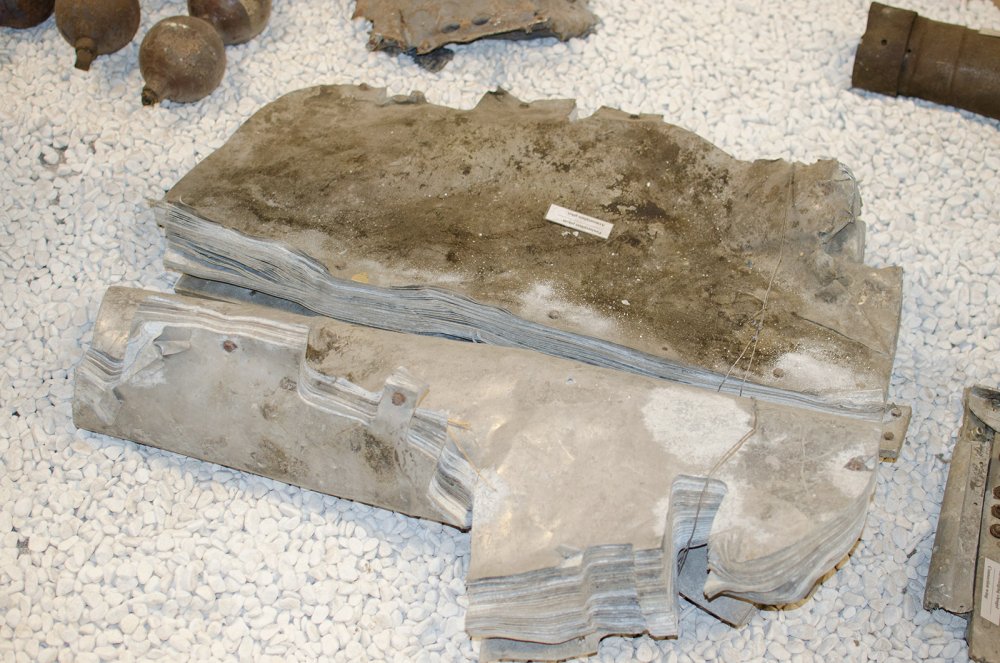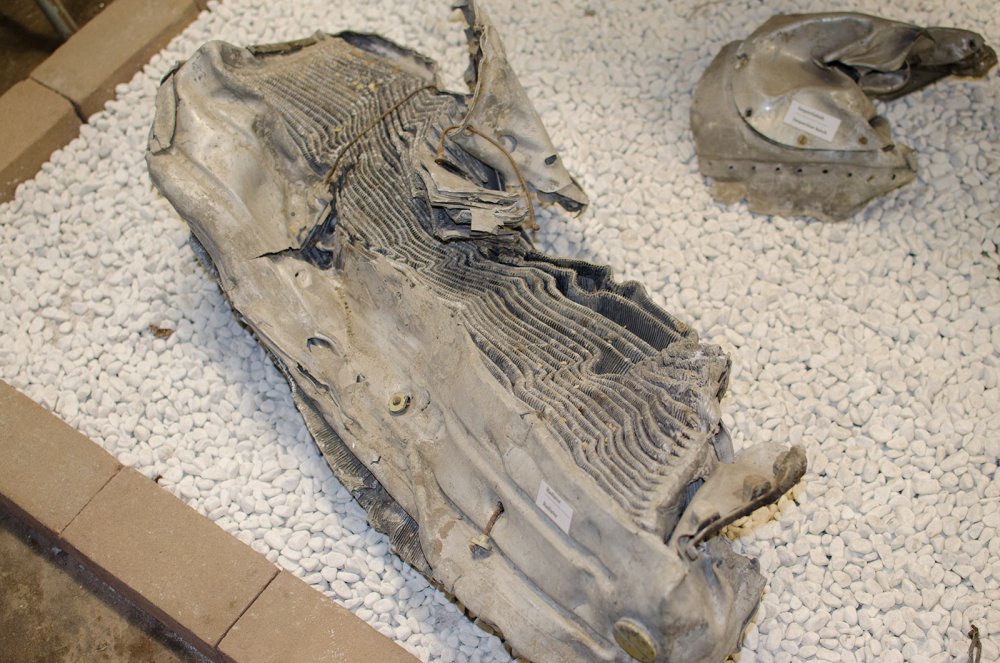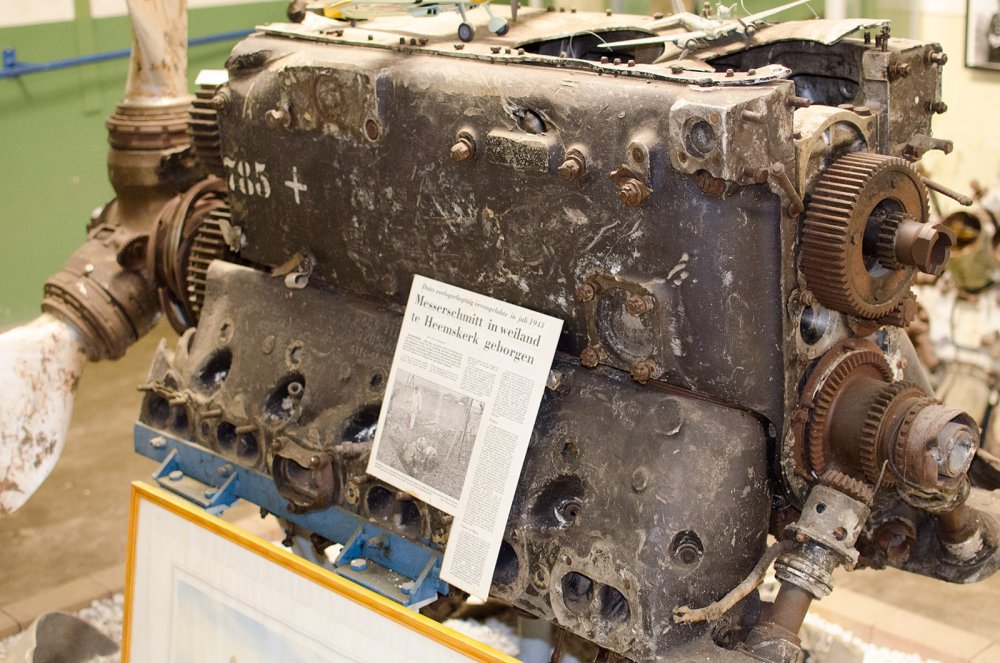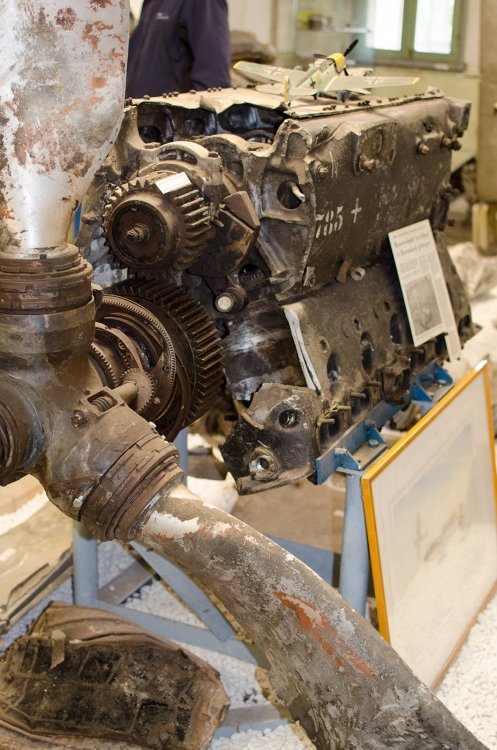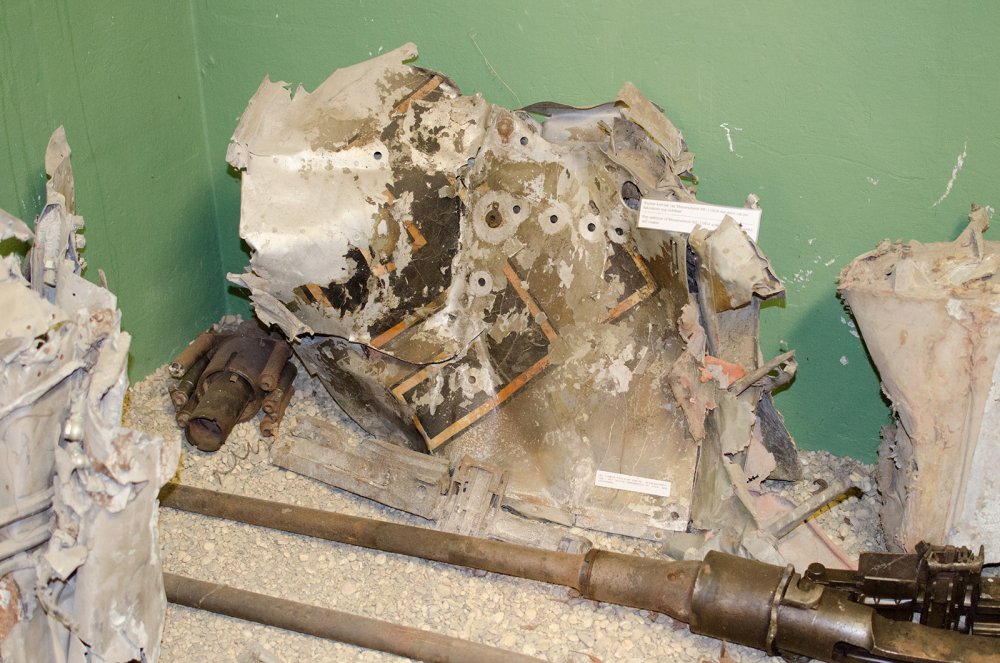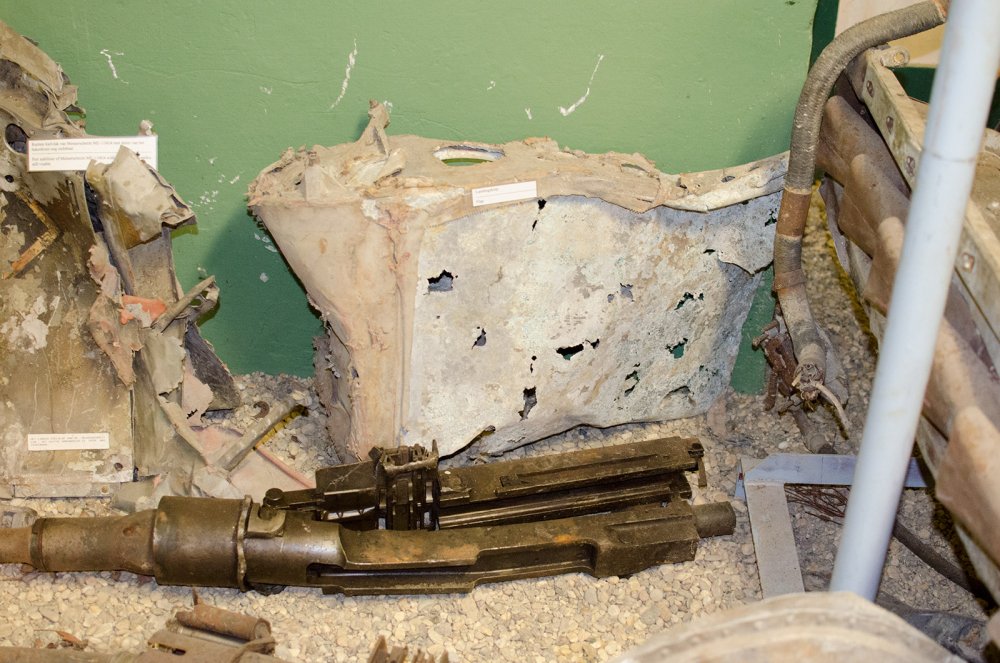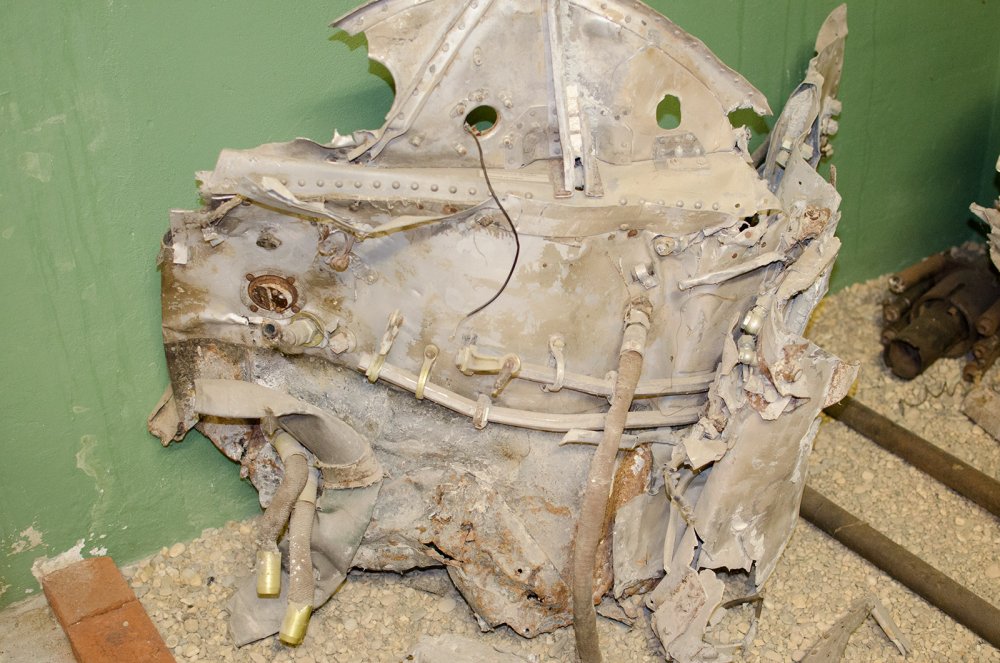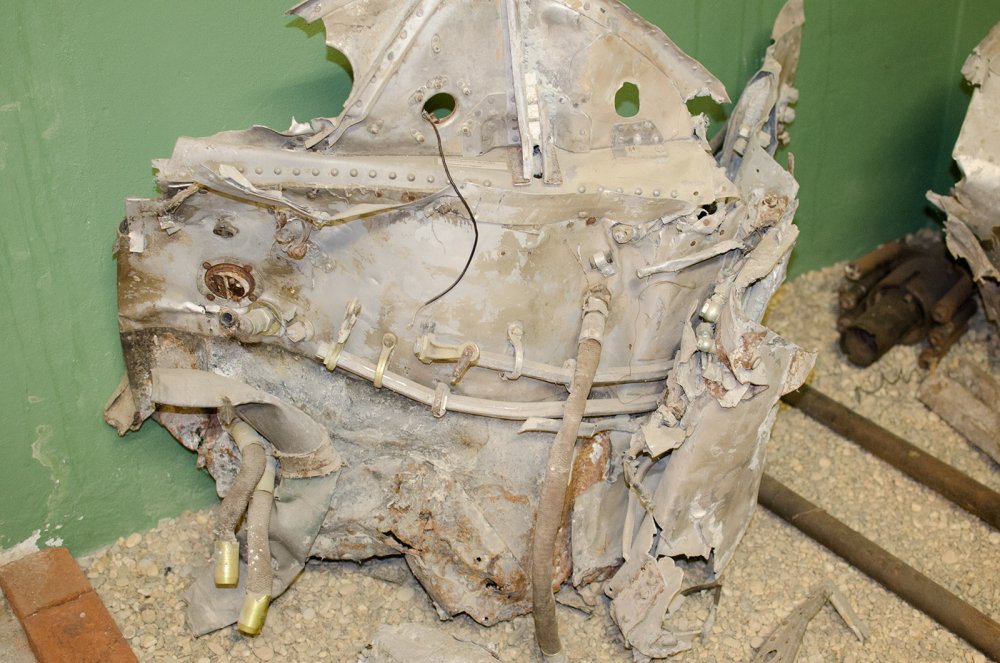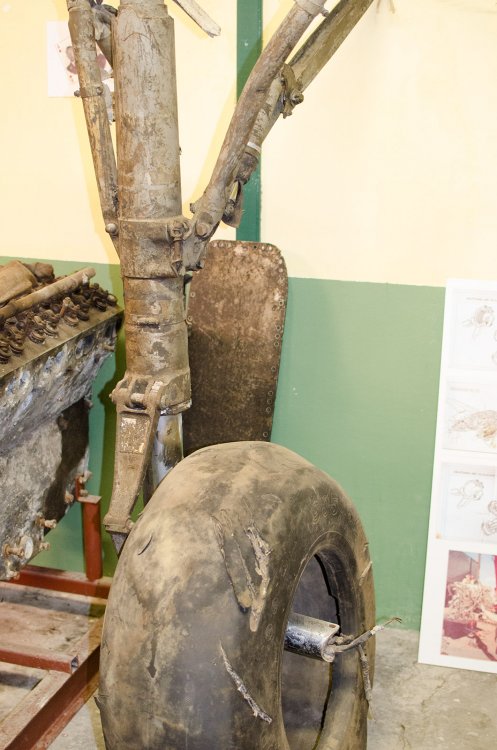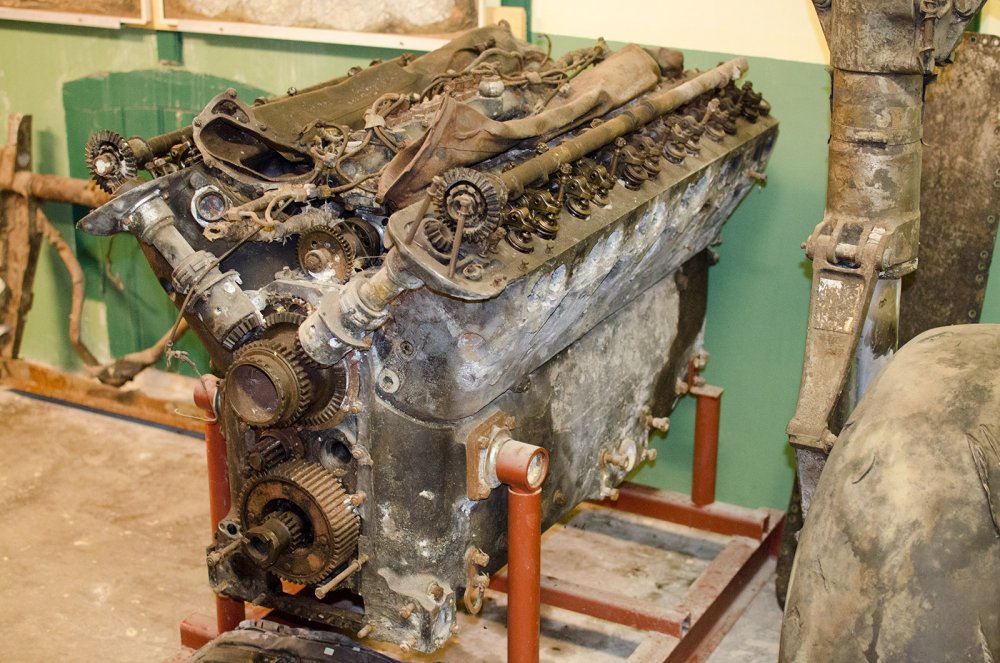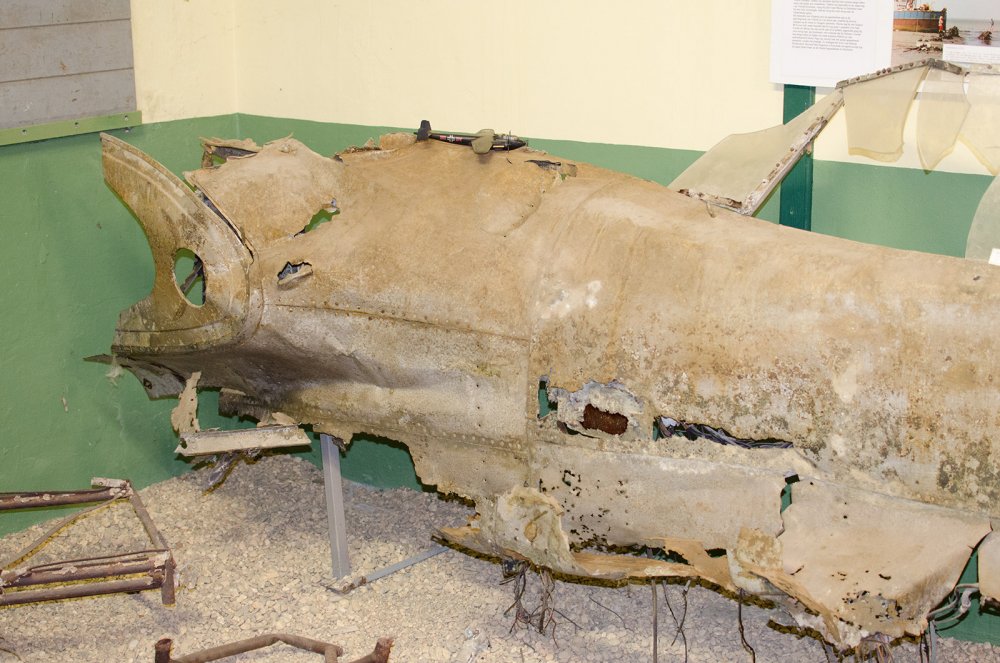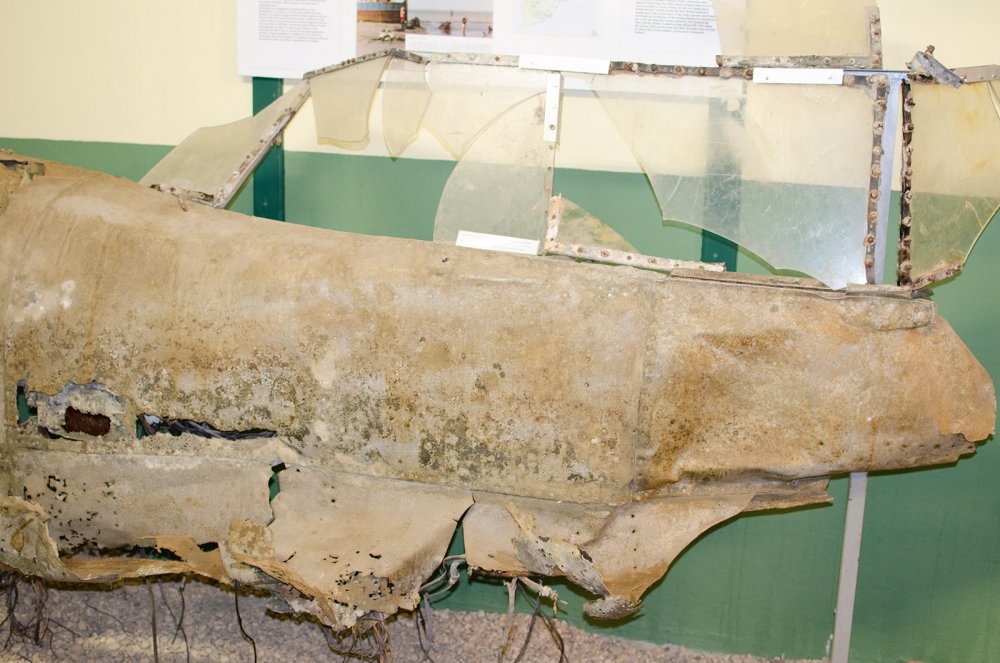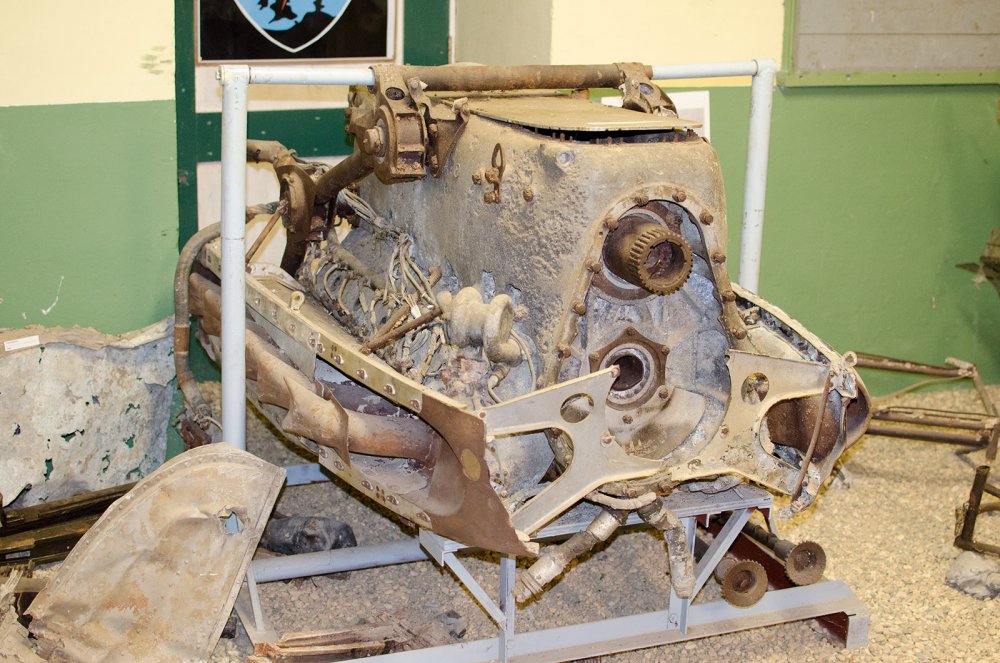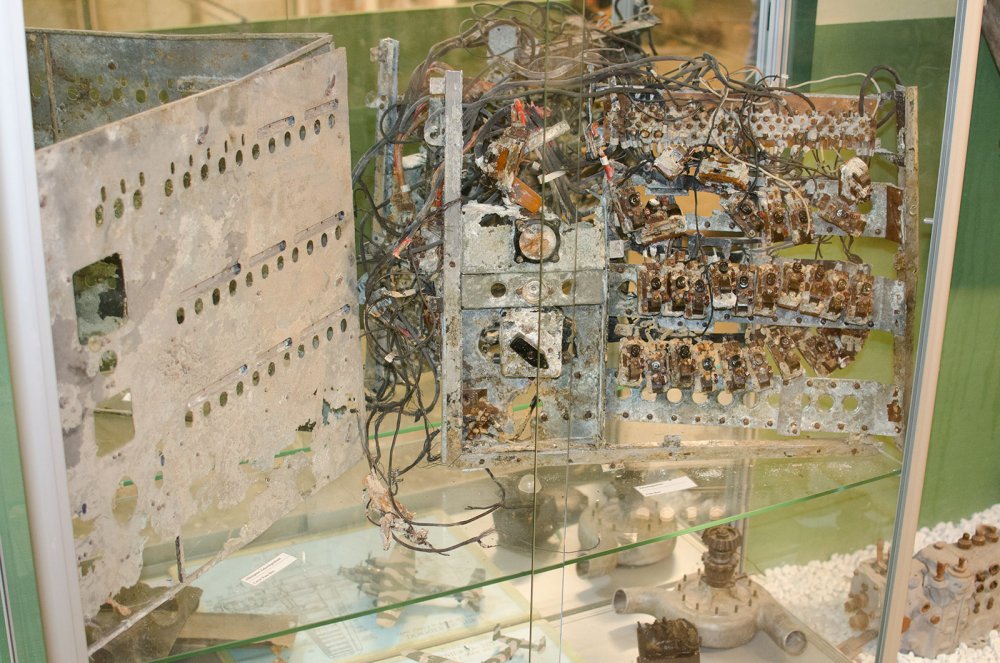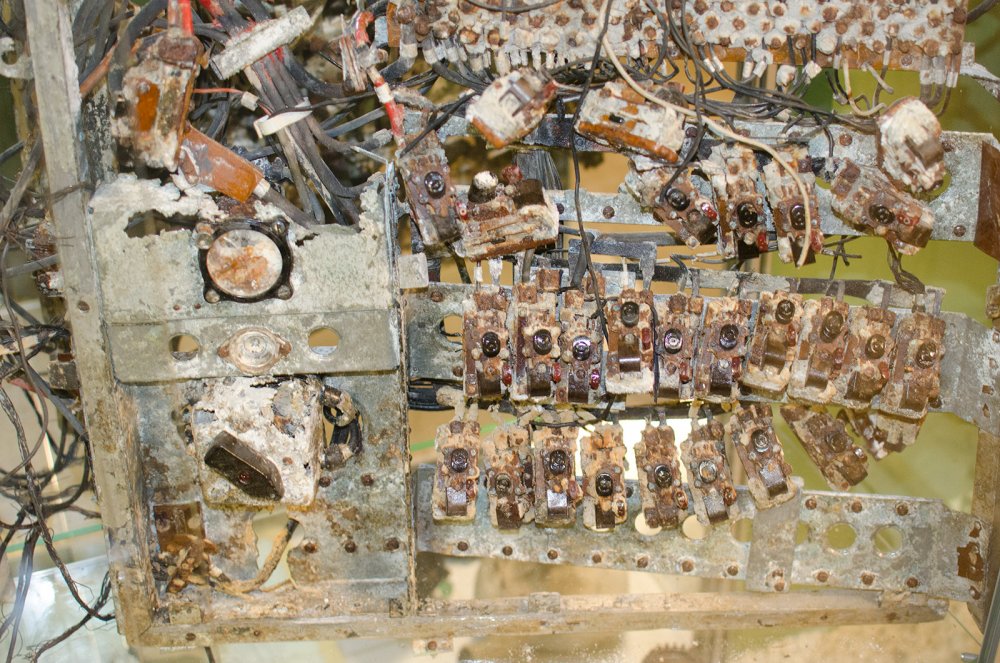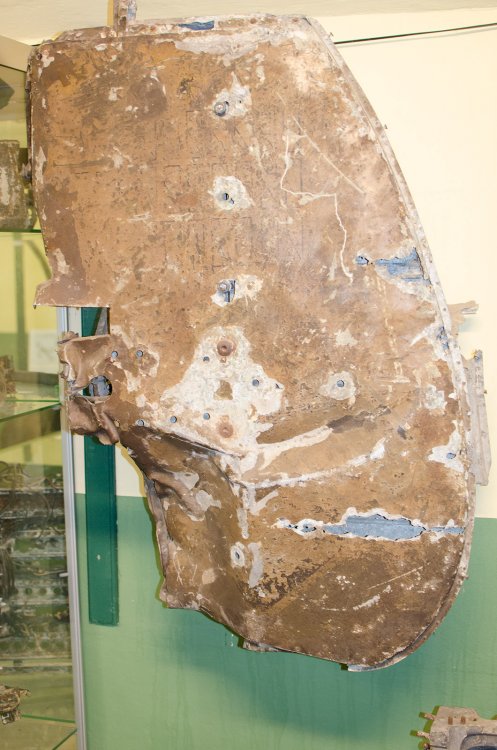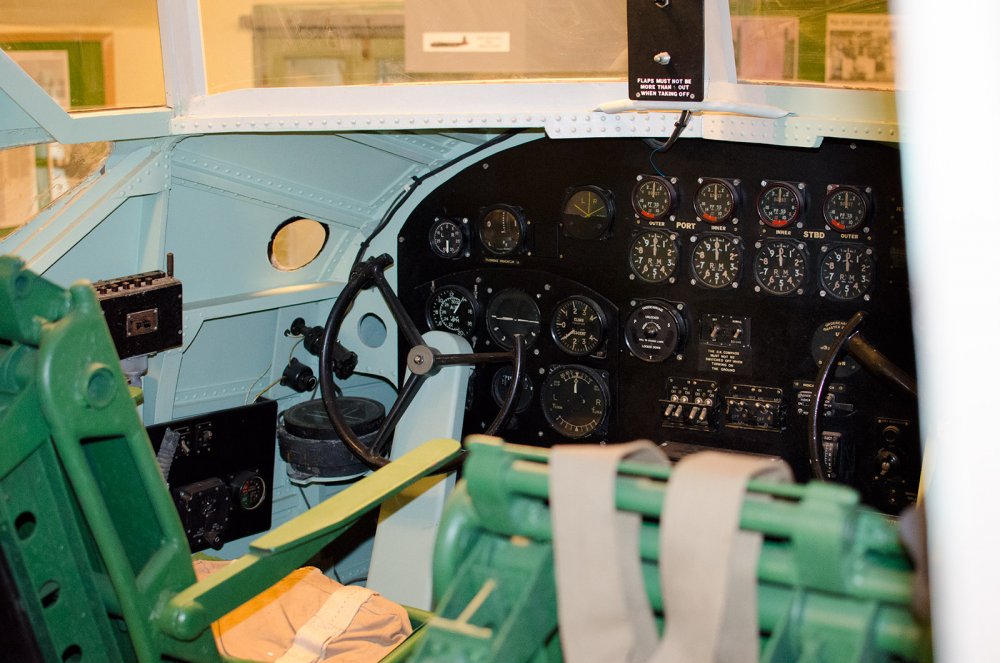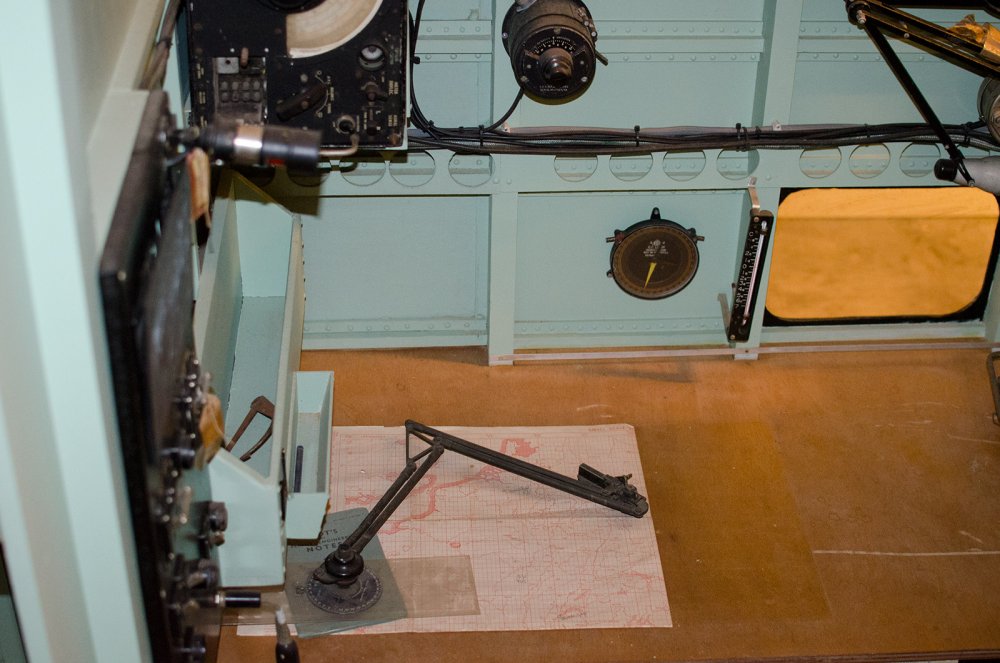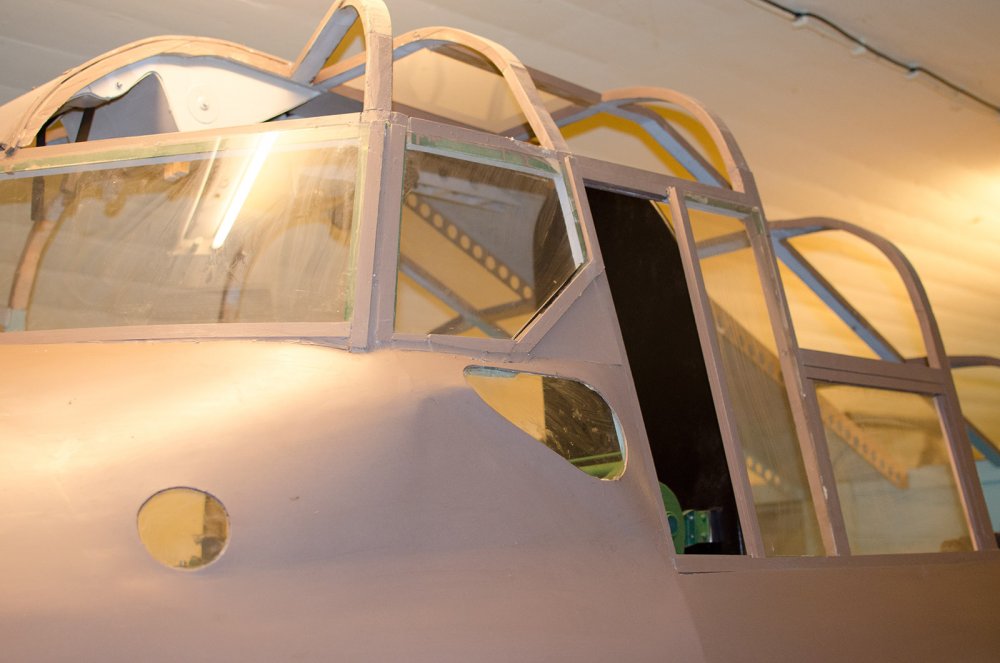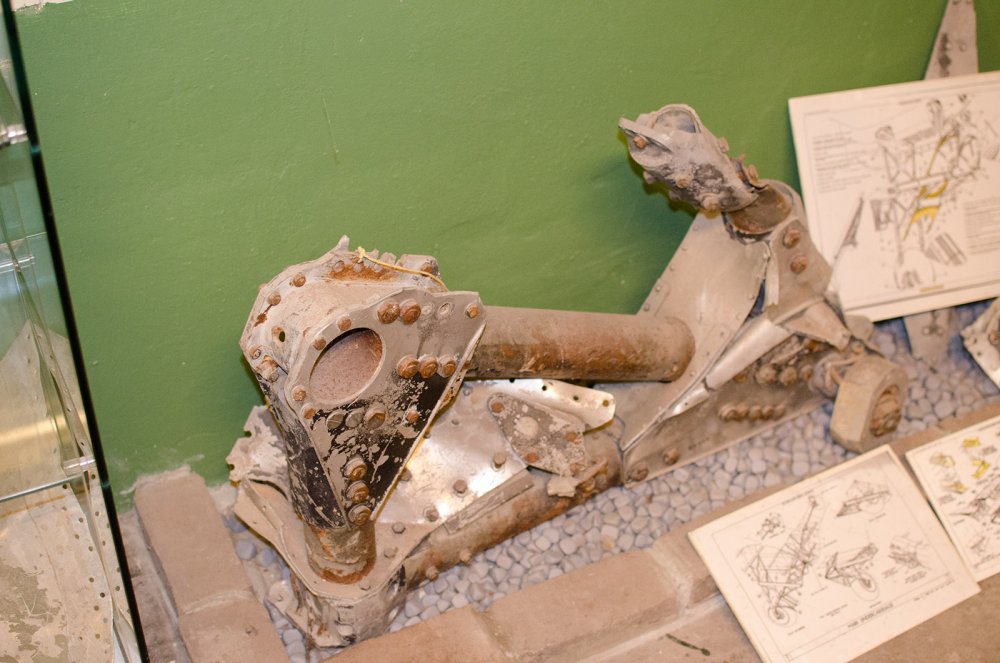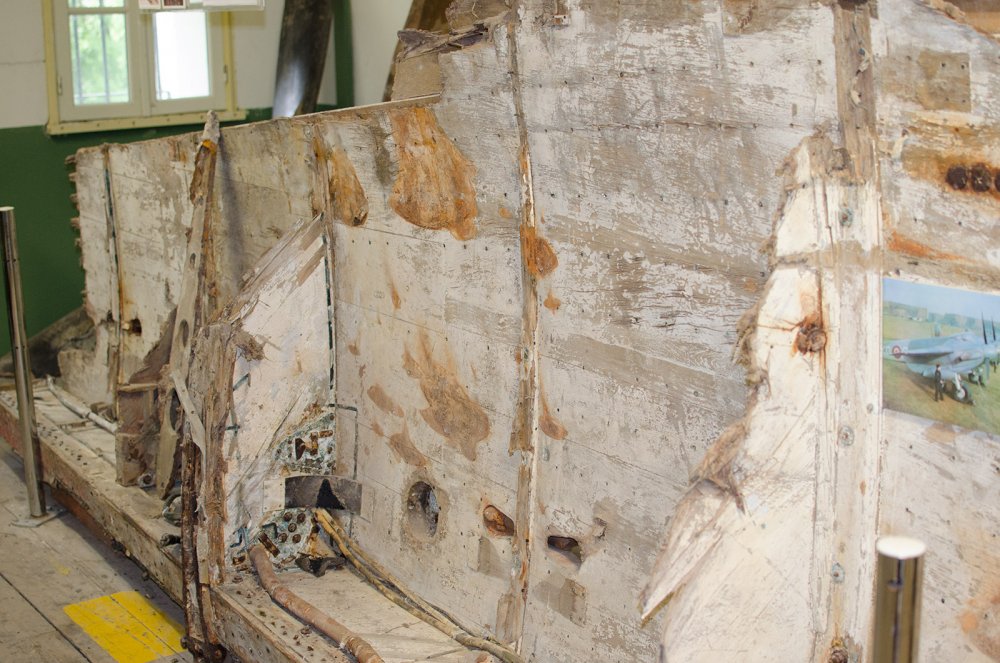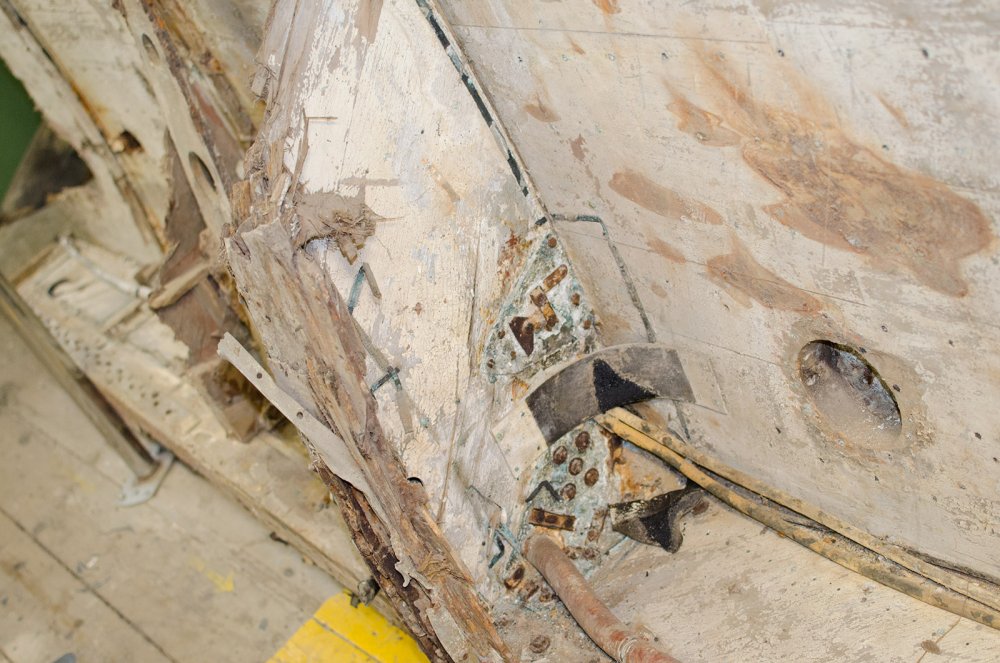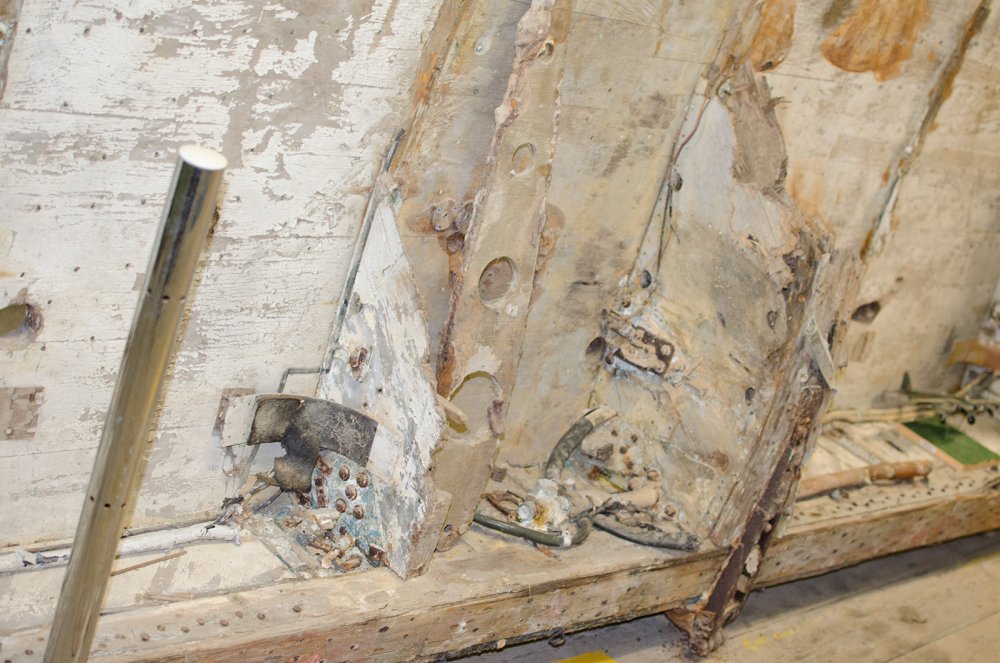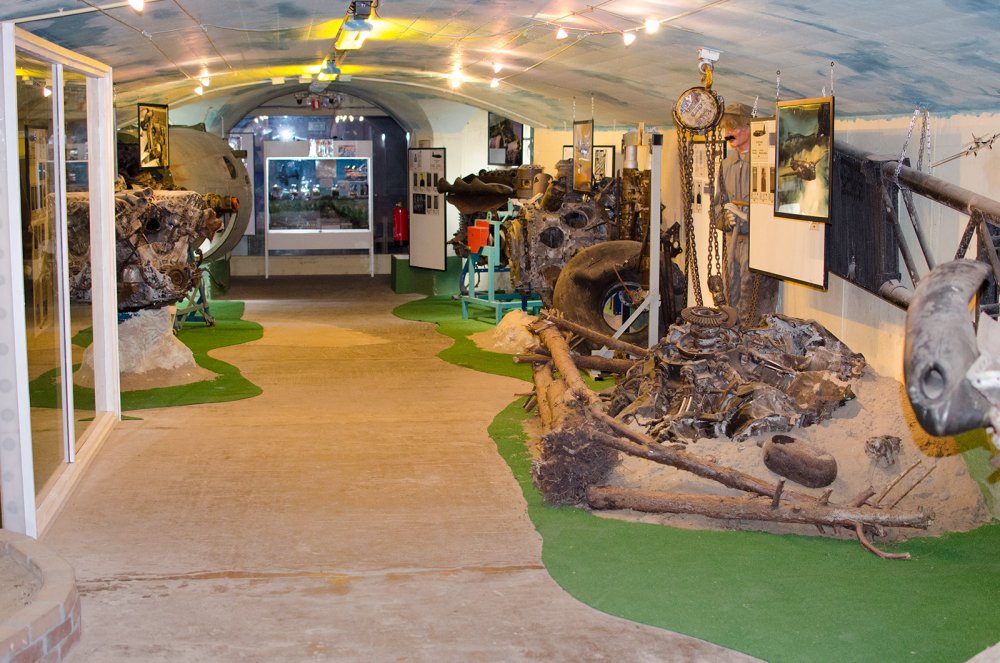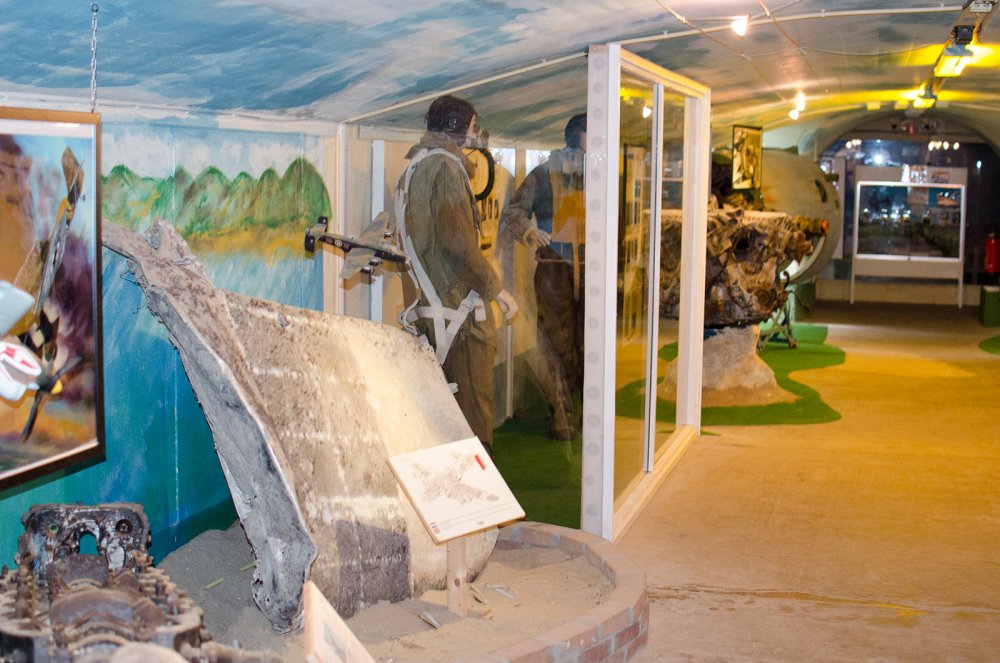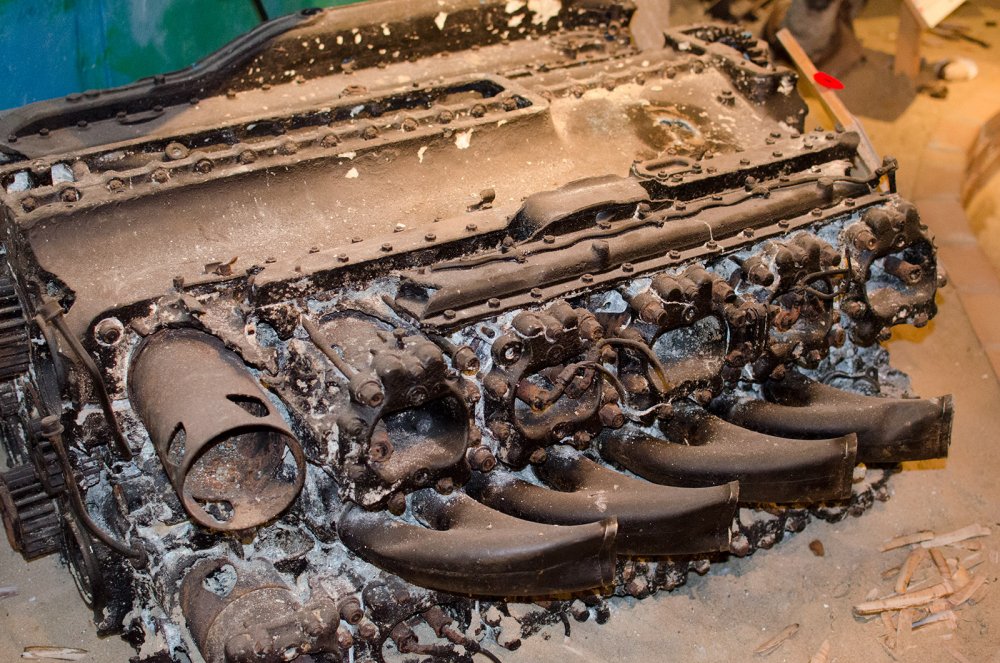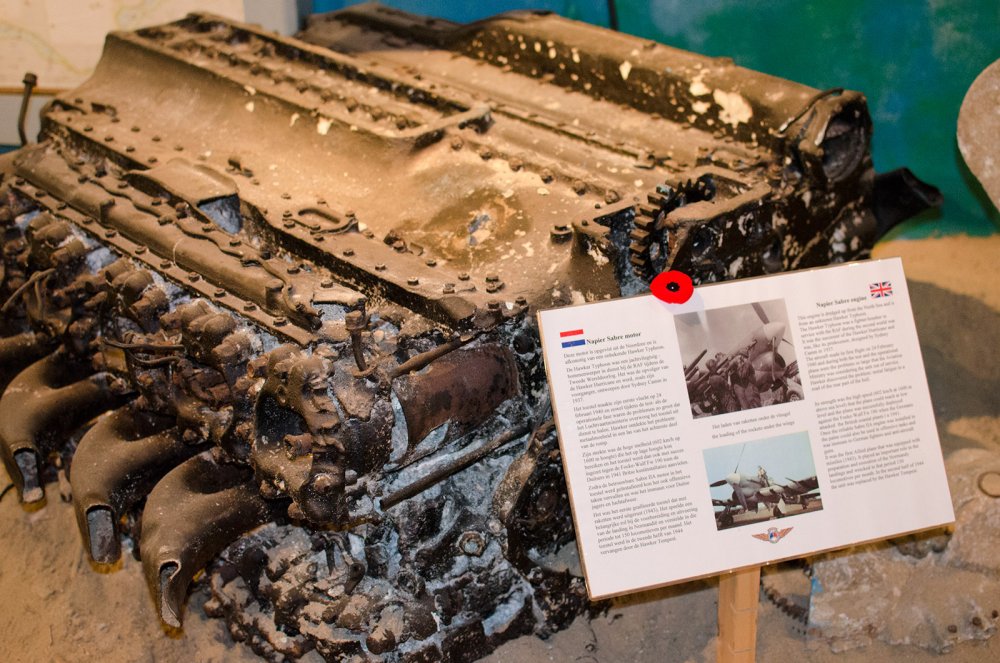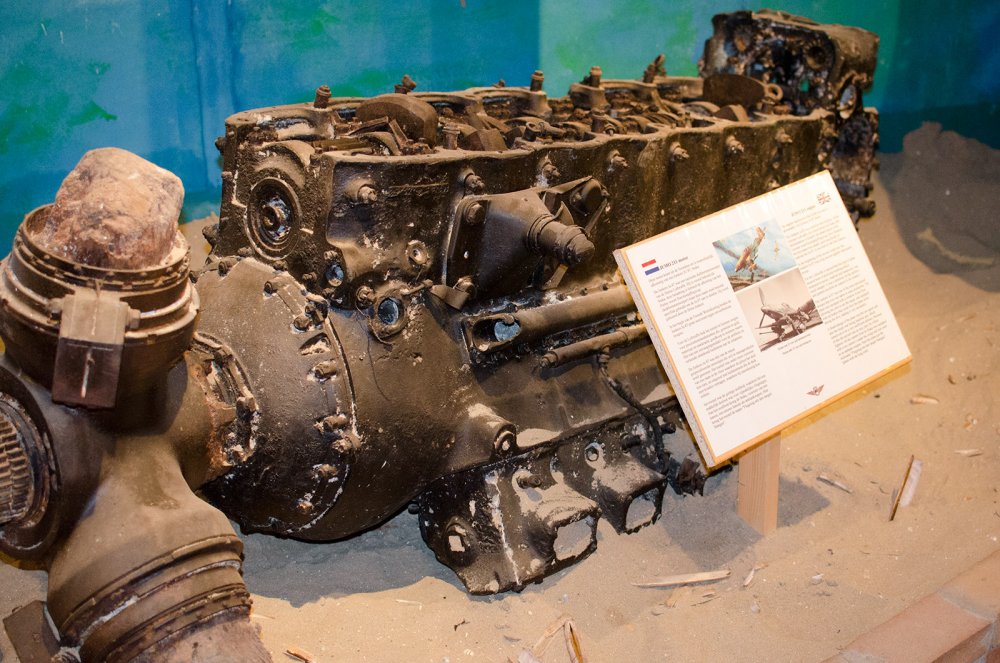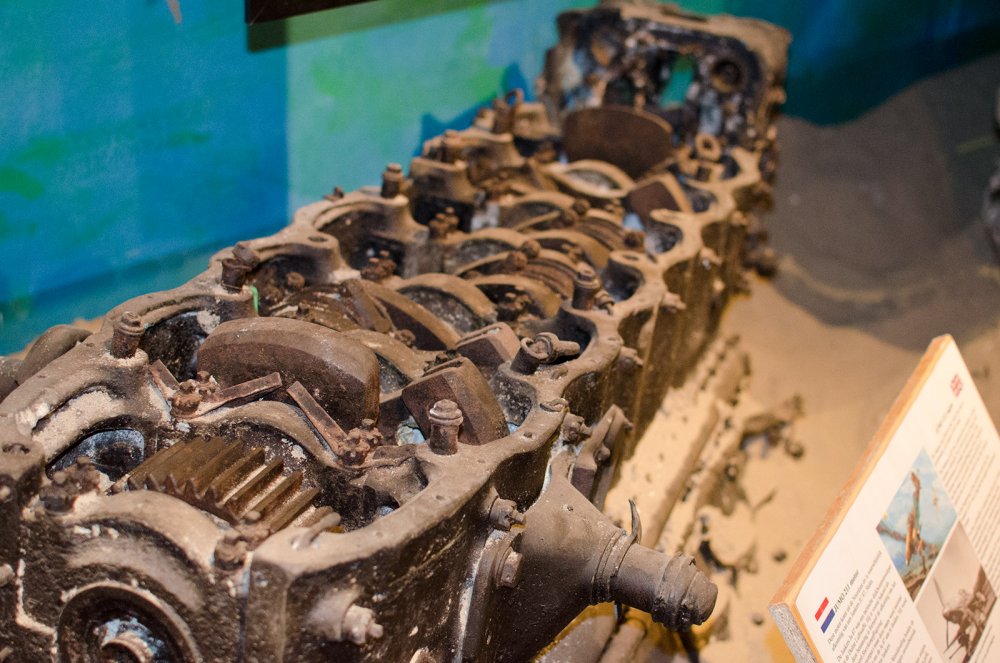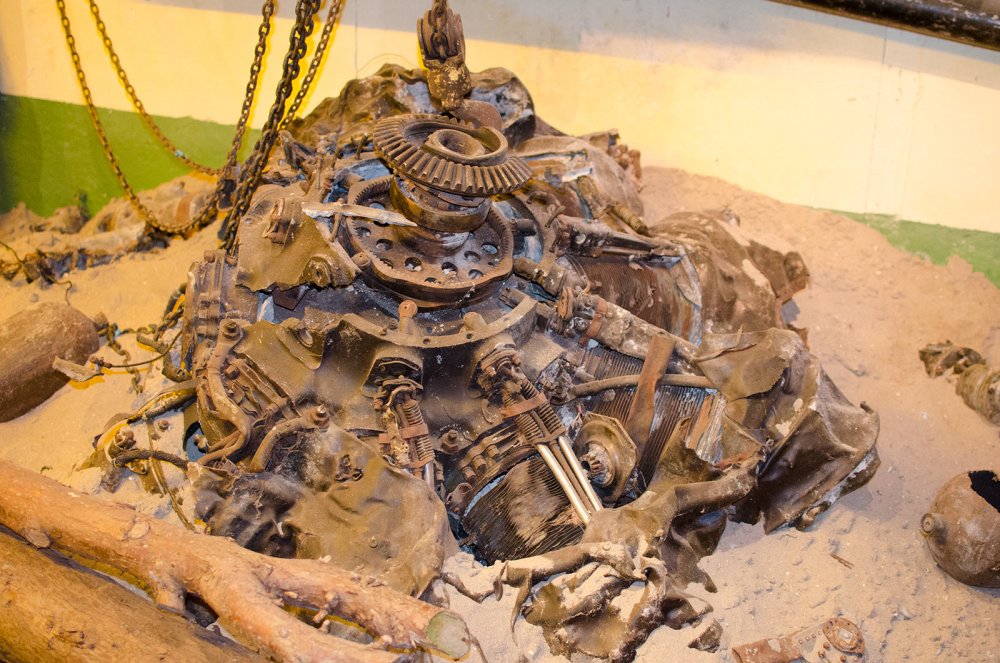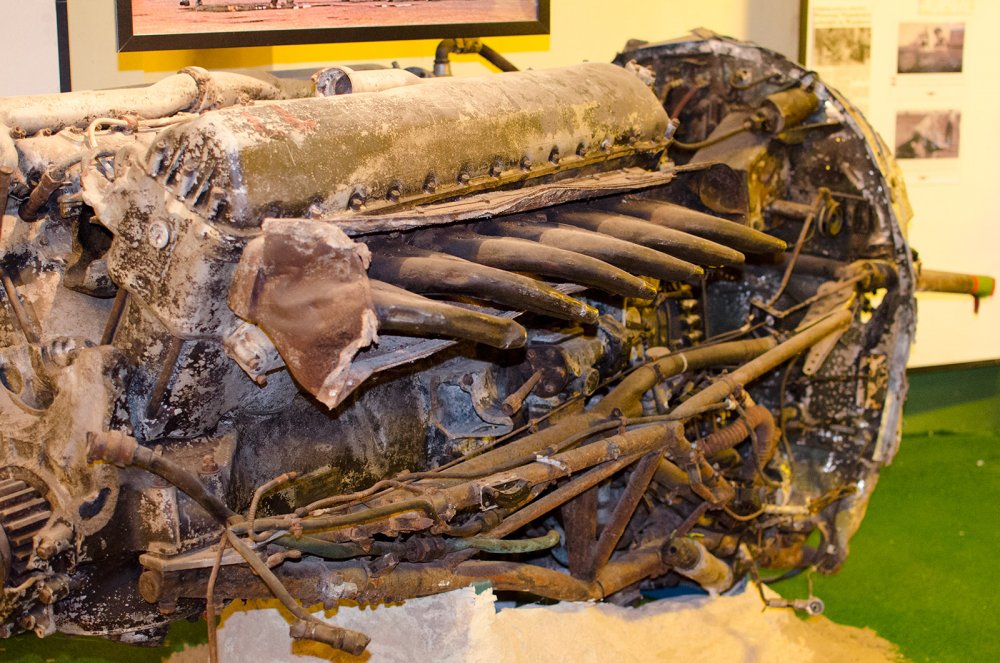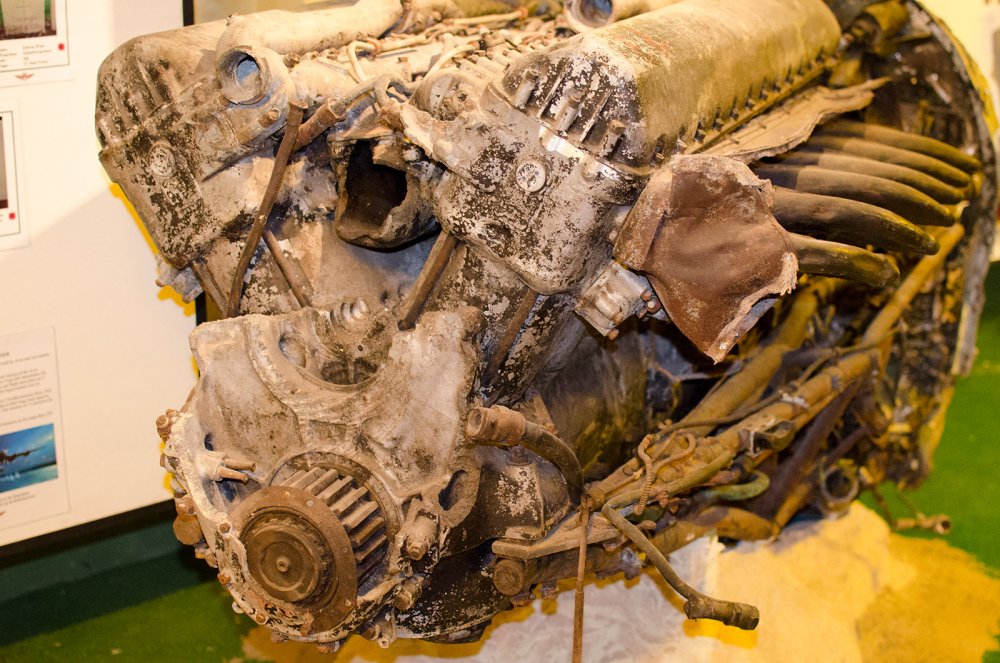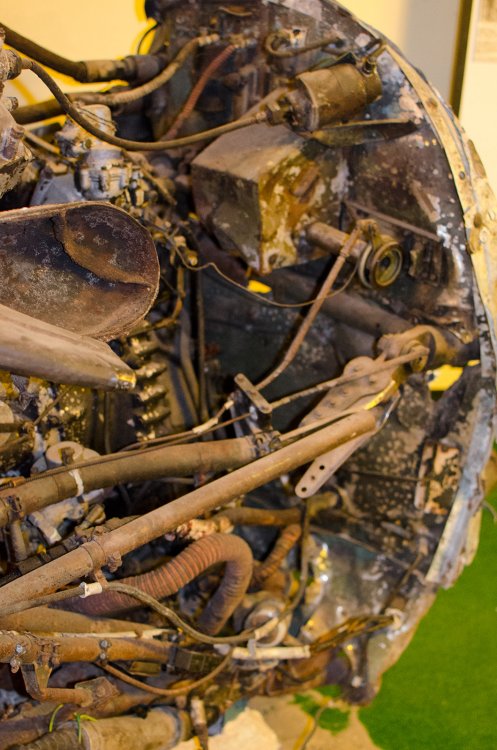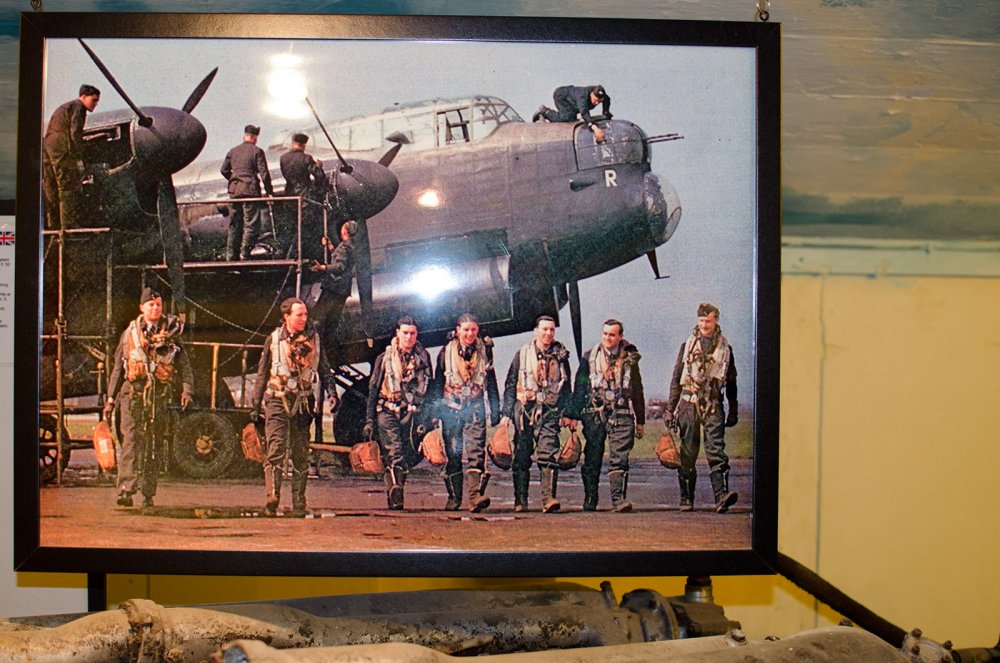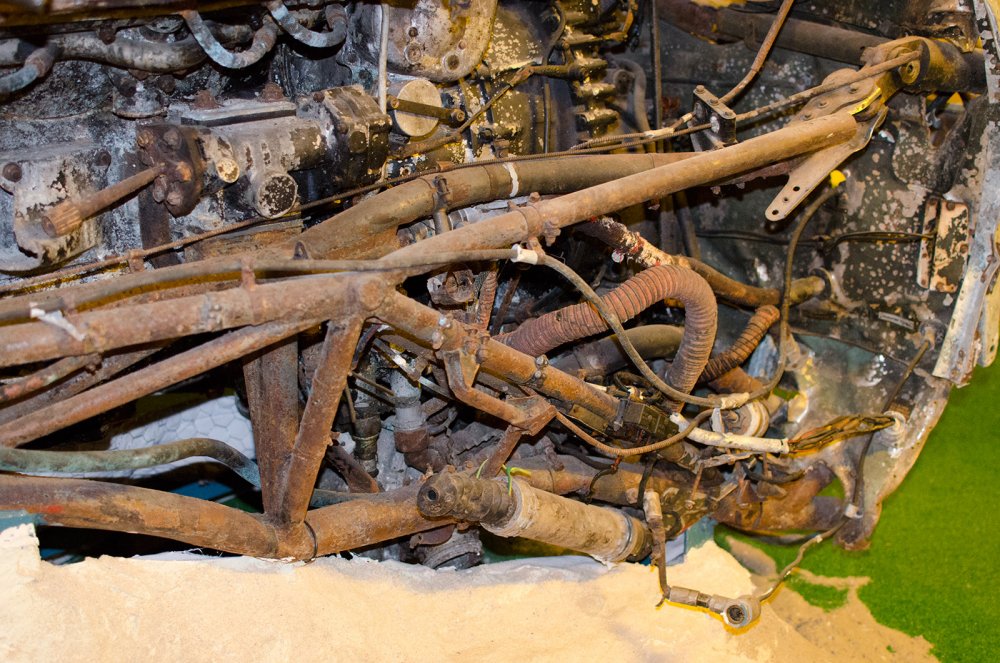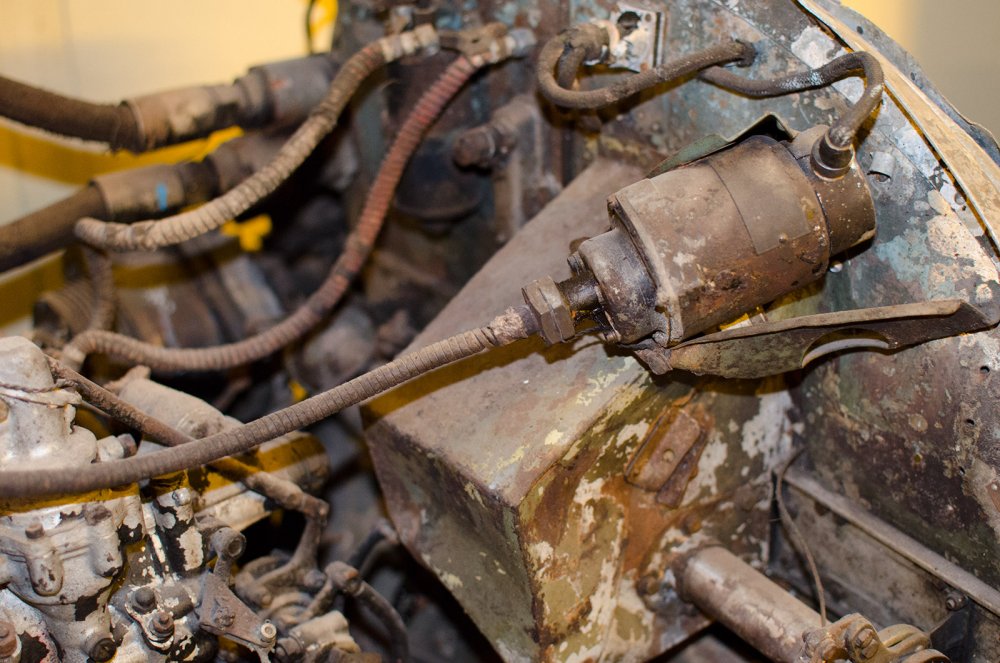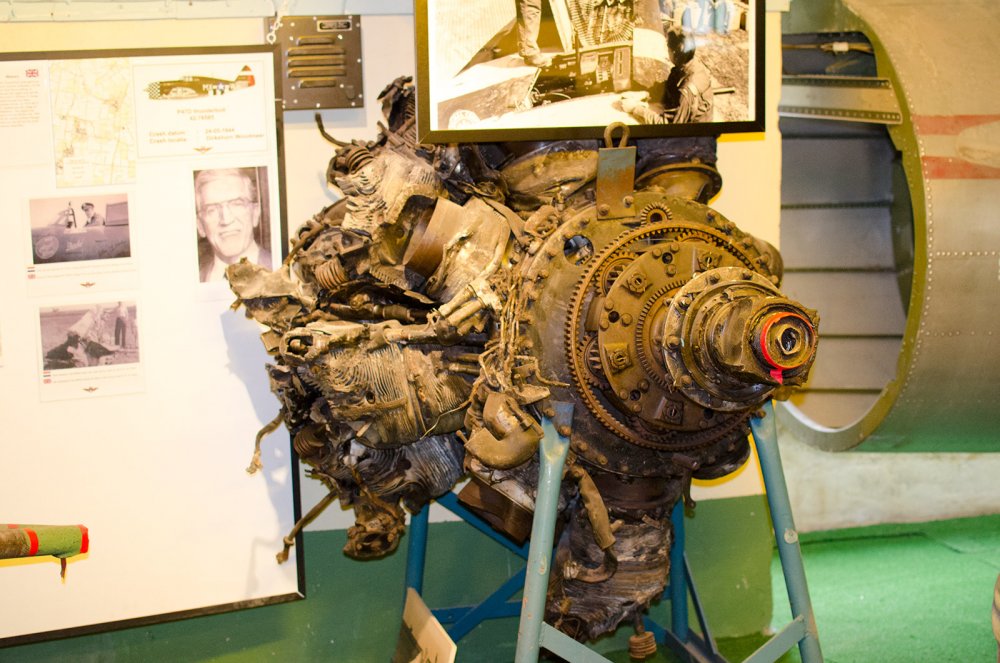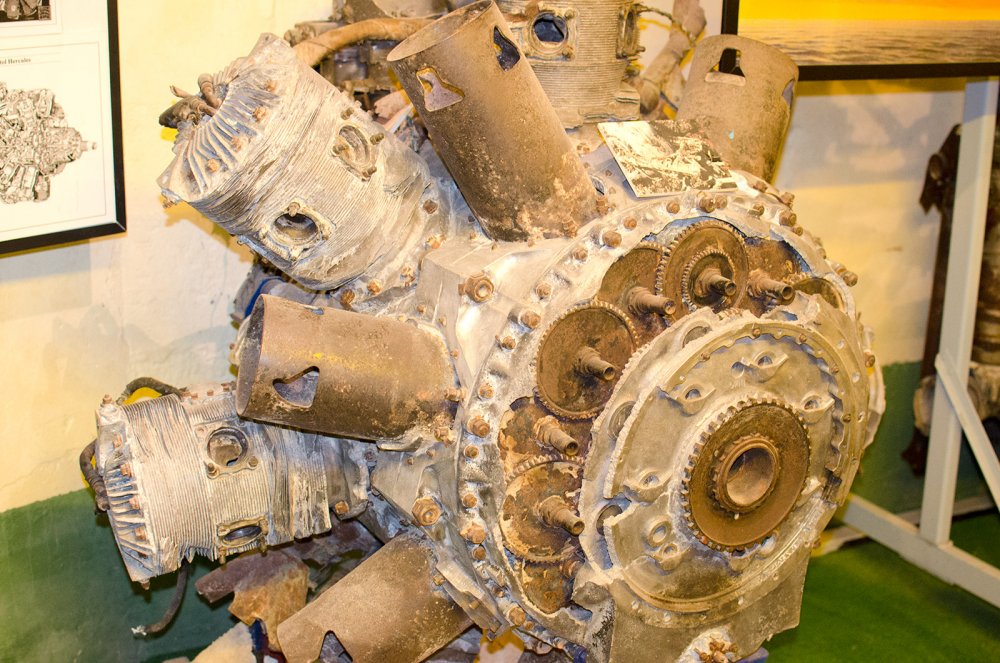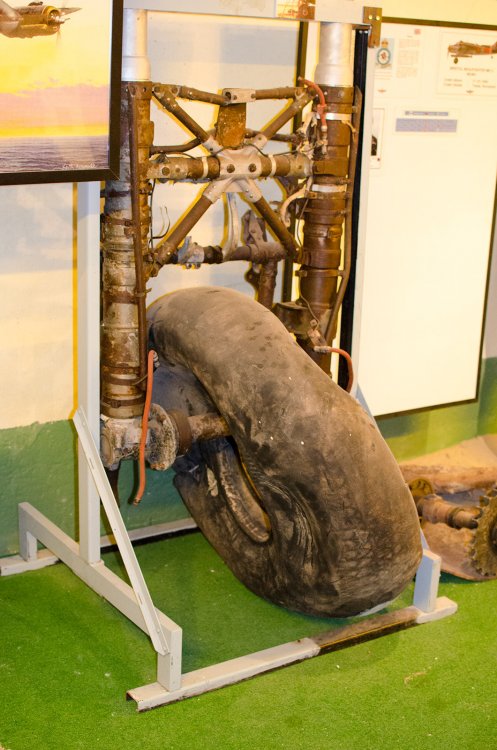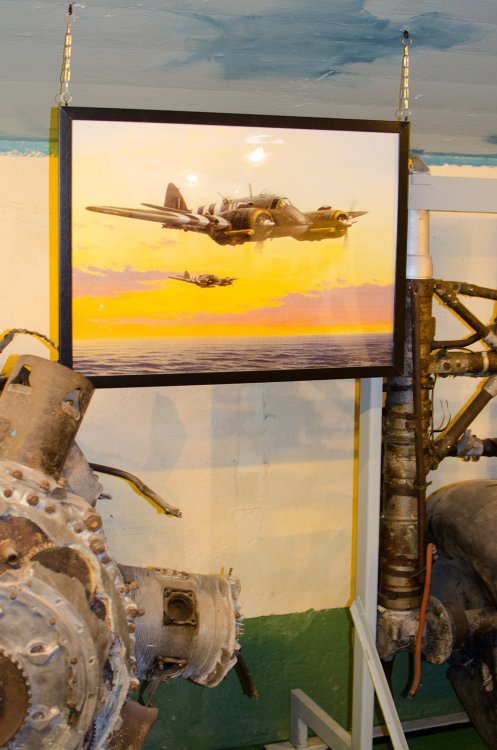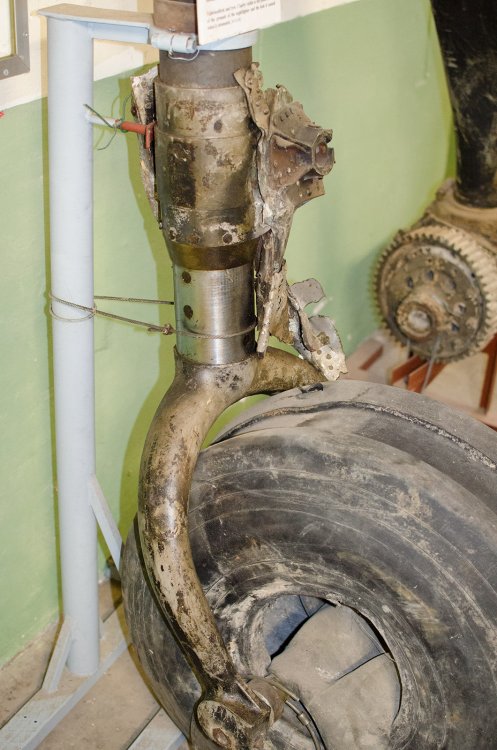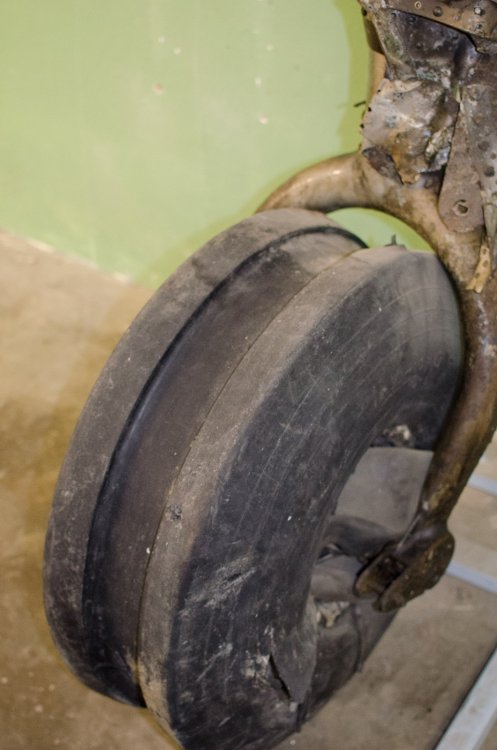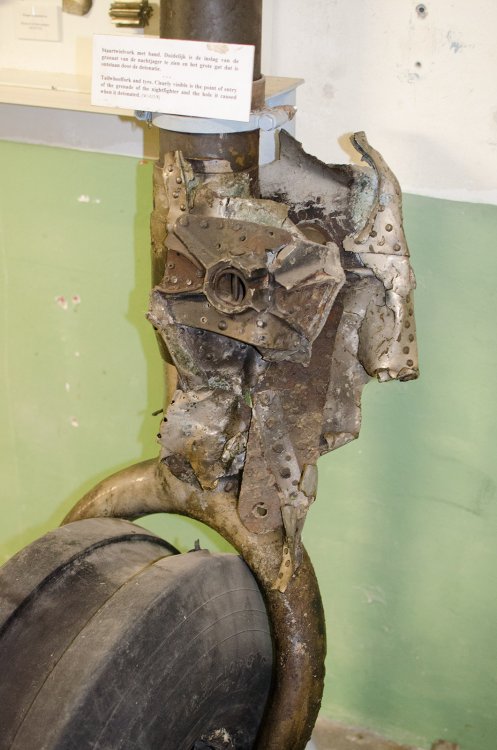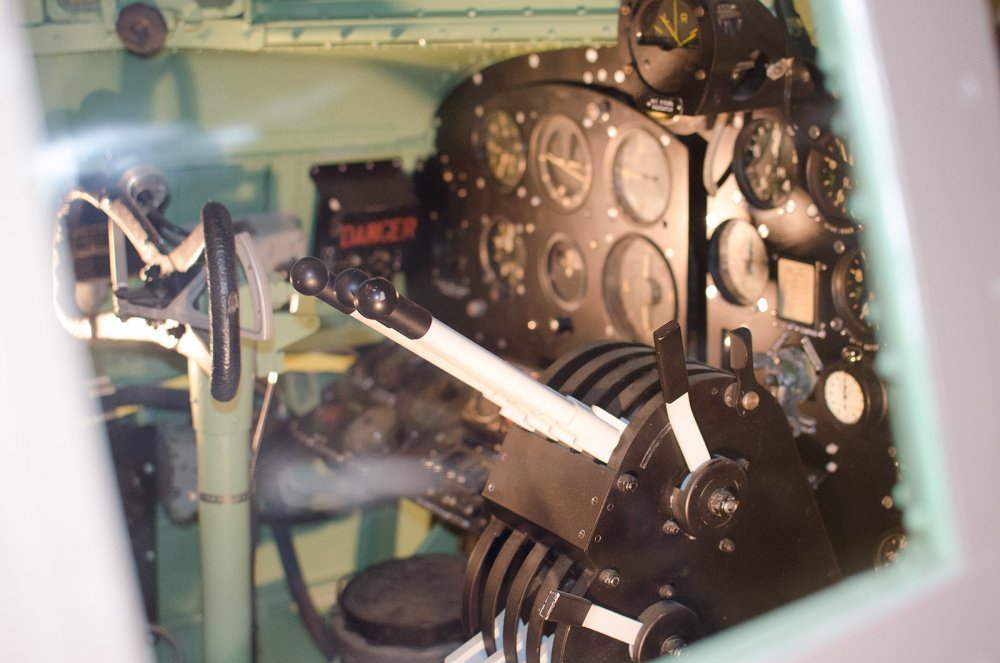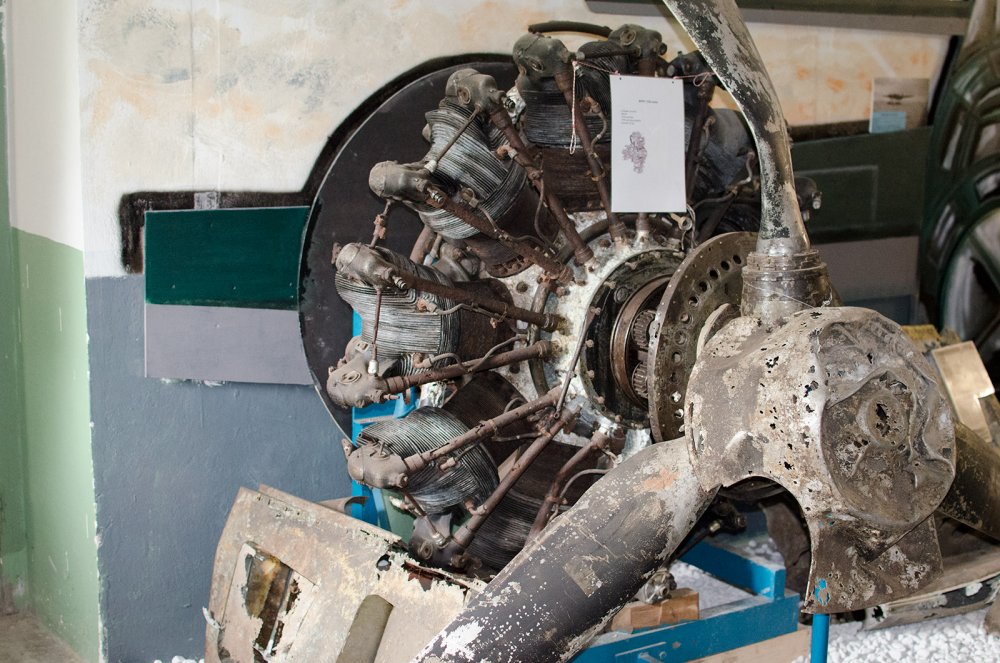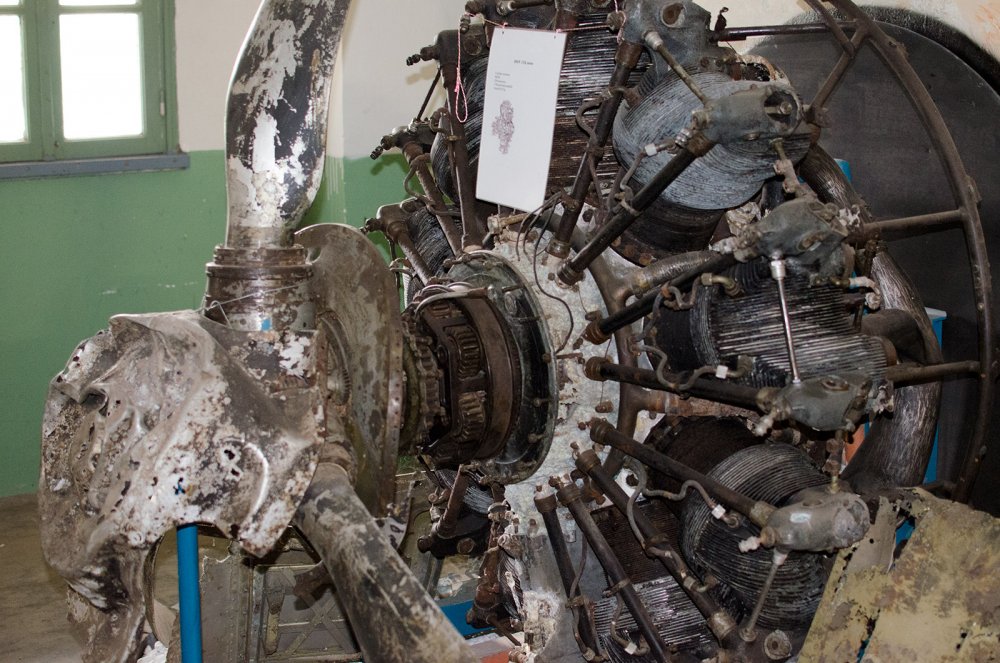-
Posts
3,257 -
Joined
-
Last visited
Content Type
Profiles
Forums
Events
Gallery
Everything posted by James H
-

1/32nd scale Halifax: *project complete*
James H replied to ThomasProbert's topic in LSM 1/35 and Larger Work In Progress
This is just gorgeous. I seriously envy those can can do vac form like this. Got to be one of my favourite builds, ever. -

HPH Reichenberg Re 4a 'Piloted V-1'
James H replied to JeroenPeters's topic in LSM 1/35 and Larger Work In Progress
Loving it! Do did a bang on job of the intake too.- 74 replies
-
- v-1
- reichenberg
-
(and 1 more)
Tagged with:
-

HPH Reichenberg Re 4a 'Piloted V-1'
James H replied to JeroenPeters's topic in LSM 1/35 and Larger Work In Progress
How well did it close? Anything to look out for? I feel the biggest part of the project will be the carriage.- 74 replies
-
- v-1
- reichenberg
-
(and 1 more)
Tagged with:
-

Holland Spectacular! Fort Veldhuis museum walkaround
James H replied to James H's topic in Walkarounds
Some very rare and unusual items here......come on folks!! -

Holland Spectacular! Fort Veldhuis museum walkaround
James H replied to James H's topic in Walkarounds
See if you can identify stuff here..... -

Holland Spectacular! Fort Veldhuis museum walkaround
James H replied to James H's topic in Walkarounds
-
Hi folks, You'll have to forgive me for not remembering exactly what everything is here. Some are obvious, and some less so. Where you don't know, I'm sure Cees will give you the full information. Had a great time at a private viewing of the Fort Veldhuis museum this last week, with Cees Broere and Jeroen Peters as my guides. The beautiful thing about this museum is that it portrays a human story. I defy anyone to go there and not be touched by what they see. Each twisted metal fragment tells a story. In many cases, those stories carry a face; a son, father ,brother. Quite humbling. For more info, click THIS link: http://www.arg1940-1945.nl Anyway, enough of my sentiment. I hope you enjoy these:
-
Looking mighty fine Cees. One for the museum?
-
No price yet, but we'll bring you more info as soon as we can get it for you.
-

HPH Reichenberg Re 4a 'Piloted V-1'
James H replied to JeroenPeters's topic in LSM 1/35 and Larger Work In Progress
I handled that card stock. It was real exciting.- 74 replies
-
- 2
-

-
- v-1
- reichenberg
-
(and 1 more)
Tagged with:
-
1:32 Dornier Do 335B HK Models Catalogue #: unknown as of yet 'First Look' In-Box contents preview There are a number of subjects that you sort of dream will one day be released in 1:32. Just a handful of years ago, it perhaps seemed that those subjects wouldn't see the light of day for the foreseeable. Of course, we perhaps didn't vouch for a company such as HK Models making a big hit in our hobby, in more ways than one. HK Models, in quite a short period, have already brought us a B-17, three B-25 variants, a Meteor, and there is a Mosquito expected, as well as other planned B-17 kits. Apart from the Mosquito, the other releases represent the bulk of planned releases that formed the original Wingscale brand that eventually became HK Models. The Dornier Do 335B represents the first release from HK that has nothing to do with Wingscale, and as you'll see during the course of this preview, the future is looking very bright. LSM has had the privilege of being sent a test shot of the new Dornier Do 335B 'Heavy Fighter'. Being a test shot, this isn't entirely representative of what you're likely to see in the final release. Being in regular contact with HK, I know that tooling revisions can, and are implemented very quickly. Our test shot arrived, crammed into a 1:32 Meteor box, with some protective bubble-wrap. Neil Yan only just managed to fit this kit in this box. I don't know if this box size is indicative of what we'll see with the final release. The test shot doesn't include the decals, instruction manual or the shaped, cast weight which will allow the model to sit on its nose gear wheel, and not become a dreaded tail-sitter. There's little doubt the final box will be larger generally, or certainly deeper in order to fit the extras in there. Neil hasn't given any indication as to whether any photo etch parts will be included in here for things like seatbelts. However, there will be that cast nose weight I just mentioned. I don't intend this to be seen as a review, and as such, I won't be going into the levels of per-sprue detail you are used to seeing on our articles. Slide-moulded hollow control surfaces This kit is certainly no weekend project, and comprises of FIFTEEN light grey styrene sprues (inclusive of a couple of duplicated sprues for engines etc), and one clear sprue. As with the Meteor test shot that we looked at, the Do 335 sprues don't yet have any nomenclature (Sprue A, B, C etc) or parts which are numbered. All part number tags are blank at present. I will be expecting a draft copy of the instructions at some point, and I'll build this one up for you. Test shot sprues are packaged into bubble-wrap, whereas your final kit parts will be in cellophane bags. The largest sprues just about shoe-horn into the Meteor box. In all, this looks an imposing project. Time to take a closer look at what you'll expect from the final release. Leading edge moulded onto upper panels Some ejector pin marks on internal panels It's obvious from the break-down of this model that HK intend to produce further variants of this aircraft. I have been told this anyway, but it is clearly seen in the way that certain parts of the aircraft are modular. A future two-seat machine will easily be facilitated due to the inclusion of the spine as a separate part. It will be easy to fit a smaller fuselage fuel tank into the area to the rear of the pilot, and the inclusion of a new spine, canopy and rear cockpit parts, and there you have it! This 'Heavy Fighter' variant had two 30mm MK103 cannon installed into the wings, and this intruded into the space reserved for the internal, leading edge fuel tanks. To remedy this, auxiliary fuel tanks were installed internally within the bomb bay. HK have also included those tanks in this kit. Nose gear bay, with moulded detail Various bulkheads with pre-moulded detail Some bulkheads have ejector pin marks on one face Wing leading edges, where they have protrusions, can be problematic when it comes to finding a solution to creating these without troublesome and difficult to remove seams. This kits modular approach means that the inboard leading edge panes are moulded as separate pieces, INCLUDING the cannon fairings! This is accomplished via some rather nifty slide-mould technology. A small moulding seal exists around the outside edge of this, but that actually may be quite accurate with the fairing area itself. There must have been some sort of joint here on the real thing. Slide-moulded air intake scoops Even without the spinner in place, and the forward engine cowl/spinner, the Do 335 is an impressively sized model in 1:32. It seems that HK Models have gone 'slide-mould crazy' on this release too, and all for the greater good! Two sets of wingtips are included, one for M-13 and one for M-14 standard, and these are supplied as single pieces! No upper and lower parts to join. The whole parts are slide moulded, and when you consider the depth of the larger wingtips, that is some very impressive moulding. Slide moulded leading edges with integral cannon fairings Control surfaces are also slide moulded. Instead of upper and lower pieces where you need to remove seams, these are moulded as the main surface, with an insert for the leading edge. Very clever indeed. Each engine has an intake scoop. Normally these would be built up as halves, but again, slide-moulding has created these are single pieces that really do have to be seen to be appreciated. There are two sprues in this release of which two each are supplied. These relate to the engine, engine bearers, plumbing and also the exhausts. The latter are supplied as individual parts, with a hollow end and very realistic weld seams. A long tab is included for easy fitting to the engine itself. This model has a fully detailed interior, including bomb bay. No bombs can be seen in this kit though, despite an image on the HKM Facebook page showing one. The bomb is slated for the future 'A' variant, and not this one. I'm pretty sure that the whole bay was taken over by the two auxiliary fuel tanks anyway. Fuel tanks have been moulded with the various pipes etc already in place, just as ZM did with the fuel cells on their He 219 release. I have to say that this looks every bit, if not more refined than that kit Numerous internal bulkheads are included which contain some excellent detail. Unfortunately, it is the case that the reverse of these have some ejector pin marks in amongst the detail. These may be lighter in the final release due to tool adjustment. We'll have to wait and see. Some of these I will add thin plasticard discs into, and skim over with putty. Of course, the cockpit is always a focal point for the modeller, and when you are doing something in this scale, it needs to look correct. Bearing in mind that I have no instructions at the moment, and no way of absolutely seeing exactly what goes into the cockpit, the parts I can identify look very good. The main part of the 'office' is based around a single part tub which has some great console detail. There seems very little need to add any aftermarket to this at all. The parts I can identify as from the cockpit do indeed look very good. We will bring you more information on exactly what is included when we review the full, final product. The only thing I can see which most definitely needs changing are the quite small, thick rudder pedals. Some Eduard or RB Productions parts would look better here. More slide-moulding. This time, hollow, one-piece wingtips This model also presents weighted wheels with separate hubs, amazingly detailed undercarriage bays, and great looking u/c struts. Ejector pin marks on the inside of the main gear doors will be hidden by attaching the strut. There's also no need to worry about removing a seam along the front edge of the wing. The upper panel is moulded with the leading edge in situ, and this butts up against the forward edge of the lower wing panel. This is the sort of technical innovations I like to see on our kits. Surface detail is some of the very best I've seen in this scale. The exterior is indeed riveted, and that riveting is quite complex looking. Panel lines are extremely fine, as are access panels and plates. You can also see some of the finest screw/fastener detail I've seen in any scale, and it is so TINY! The whole exterior is very, very refined, and reminds me very much of the Tamiya Mustang and Spitfire releases, for which I have here and can directly compare. As a general aside, moulding quality is excellent, but some parts have a minimal amount of flash, which is also evident on the sprues too. I'm not at all concerned about this as this is usually just a symptom of the tooling needing a little adjusting. Having seen production standard HK kits, they aren't ay all 'flashy'. I expect this will be the same for the Do 335 when in its production run. Another thing which makes me think that this is just a tooling adjustment issue is that a couple of parts which have thin edges are a little short-shot in the most minor of ways. This was evident on the Meteor test shot, but eradicated on the final product. The only sink marks which are evident are on the rear faces of one propeller, near the pitch collar. This seems to be a 'feature' with many propellers on various kits. If this is seen on the production standard model, you'll need to pop a little filler in there. Most ejector pin marks are in areas which won't readily be seen. However, there are some which are in prominent places and will need to be addressed. These can be seen in the interior of engine cowlings, and also on the interior of the bomb bay doors. A more troublesome ejector pin mark is seen on the compression strut on the undercarriage, but again, I do expect the tooling to be adjusted at this point. The clear sprue exhibits excellent clarity, and sharp, well-defined canopy framing. Strangely though, the two main hood bulges which aided the pilot's rear view, are separately moulded, and attach to the outside of the main canopy, but with no cut out in the main canopy into which the mirrors would fit. I do believe that HK Models is now going to correct this and re-tool it. We should be able to show you this in the final review in the near future. This looks an exciting release, and as soon as we have more news to bring you about this, then you can count on us to do so. Our sincere thanks to Neil Yan of HK Models for this test shot. James H TEST SHOT ASSEMBLY BY HK MODELS
-

HPH Reichenberg Re 4a 'Piloted V-1'
James H replied to JeroenPeters's topic in LSM 1/35 and Larger Work In Progress
You're motoring! That's the first time I've seen an image from inside a real Reichenberg. HPH did a pretty bang on job there. As always, superb work from you too. How will you tackle replacing the raised rivet detail when you join fuse?- 74 replies
-
- v-1
- reichenberg
-
(and 1 more)
Tagged with:
-

Special Hobby 1/32 Hawker Tempest Mk.V (SH32049)
James H replied to petr@specialhobby's topic in Special Hobby
Real pleased to see progress on this one again, and that I don't have to rivet this one myself -

Revell Spitfire II New Test shot pics
James H replied to benjaminsummerfield's topic in Modelling Discussion
I'm building this for a book..... I'll post a finished image when this one is nailed.. -

Revell Spitfire II New Test shot pics
James H replied to benjaminsummerfield's topic in Modelling Discussion
I sure am....well I've cleaned the parts up ready for assembly, but I need to get a few supplies in stock first. -

P47D Razorback Trumpeter 1:32
James H replied to Jacek K's topic in LSM 1/32 and Larger Aircraft Ready for Inspection
Hi Jacek, Welcome to LSM! I hope you don't mind, but I fixed the images in your post. Great work. I hope you'll share your new projects with us. -

Revell Spitfire II New Test shot pics
James H replied to benjaminsummerfield's topic in Modelling Discussion
I'm building test shot now. Well, cleaning up parts, ready to assemble. So far, so good. It seems like an early test too, certainly not release quality. -

British WW1 fighter / trainer - Bristol M1C
James H replied to petr@specialhobby's topic in Special Hobby
Hi Petr, Sent you a PM.... -
1:32 Letov LF-107 Luňák HPH Catalogue # HPH32031R Available from HPH for €60.00 The Luňák first took to the air in 1948, designed by a number of key, prolific Czech aircraft designers. It has the title of being the first ever glider to utilise laminar wing technology, put to great use in WW2 by the North American P-51D Mustang. Construction was generally of metal, with a later version being constructed of wood. Aerobatic performance was exceptional, and the type notably caught the eye of many aviation enthusiasts of the time. The late 1940's were a tense time in Eastern Europe, and the Soviet Union was increasing its grip over a number of countries. The facilities where the Luňák was being produced was taken over for military aircraft production, notably MiG fighter planes. A total of 75 of the Luňák were produced, with only 9 surviving to this day. Perhaps if you are a builder of military model aircraft, as I am, your eyes will also be opened by this cute release. Normally, I model WW1 or WW2 Luftwaffe subjects, so when HPH sent this to us, along with their Me 410 kit, it was an opportunity to take a look at something I would possibly never have looked twice at. That would have been a crying shame. We know HPH are more commonly known for military aircraft themselves, but they do produce a range of civilian/quasi-civilian types, and today, I'm pleased to be able to bring you our review of the LF-107 Luňák. This release is packaged into a relatively small, but deep and sturdy cardboard box, with a forward flap which releases the lid. Inside the box, all smaller resin parts are sealed into zip-lock bags, and overlaid with plenty of bubble-wrap. The fuselage halves are simply wrapped in bubble-wrap. HPH have compartmentalised the interior of the box so nothing rolls around. One of these compartments runs diagonally, from corner to corner, and contains the wing parts. These aren't wrapped, but are still well-protected. As well as the resin, there is a wallet containing a TWO photo etch frets, canopy masks, a decal sheet and a set of printed instructions. This is the first HPH release I've seen without a CD, but as the instructions pages are low in number, I presume it was a better solution to just include the paper version. Last but not least, there is the now standard inclusion of a Belgian chocolate. Mine lasted just long enough to get the package photos. You can ask my wife what happened to it after that! There are around 30 parts of pale, olive green resin which comprise the Luňák, plus a single vac-form part for the canopy. The parts which intrigue me first are the wings. This aircraft had quite a reasonable wingspan, hence the need to pack the wings diagonally so they fit into the box. Overall, the model will have a wingspan of around 45.6cm. These wings are quite narrow and thin, so in order to strengthen them, they have been cast with a full length stainless steel rod within them. This protrudes at the root, to provide you with a locating pin for fixing to the fuselage. A casting block exists along the leading edge of each wing. This slightly encapsulates the extreme forward leading edge point, so please remember this when removing it, and profile the leading edge accordingly. I absolutely love how HPH cast parts such as the fuselage. This is a beautifully thin casting, with a block which needs to removed from the lower joint. External detail is almost non-existent due to the filled and sanded structure of the real thing. A fine wing root fairing can be seen though. Internally, the cockpit walls are a little thicker, with some constructional elements reproduced. A structure exists for you to fasten the instrument panel to. Along the joint between the fuse halves, exist a series of point where you can insert pins to help align the parts together. The vertical fin is a separate part to the fuse, as is the rudder to the fin. All fixed structures are smooth externally. Construction is unusual with this in that the fuselage should be completed and painted, fit together, and then the wings added BEFORE you install the cockpit module. A large casting block contains all of the wing aileron sections (3 per wing), and elevators. Detail is fine, with neat rib and fabric being subtly reproduced. Again, the casting block is joined to the parts via their leading edge, but by a thin wall of resin which will be easy to remove and clean-up. As an aside note, the wing control surfaces don't connect directly to the wing, so no need to pin them. They are instead connected via the photo etch linkages supplied. A drawing in the instructions clearly show the angles at which these surfaces need to be posed. Another casting block contains the horizontal stabiliser, fin, and rudder. Despite the relative simplicity of a glider to a military aircraft, the interior of the Luňák still contains a very respectable amount of detail. A profiled cockpit floor, with separate resin/fabric overlay is connected to a detailed back wall. There isn't a seat in this bird, as the floor is shaped to fit to the pilot. It must've been a pretty uncomfortable ride. Rudder pedals, control yoke and instrument panel are supplied as resin parts, but if you want to use a PE instrument panel, then a two part, colour—printed one is included. A number of other photo etch parts are included for the cockpit, and these include levers, instruments, map case and placards. A full set of colour seatbelts is included too, but these look to be exactly the same as Luftwaffe types. Perhaps the Czechs were using these in the late 1940's. I would perhaps choose to use a replacement laser cut seat belt set from HGW. All resin parts are beautifully produced with no visible flaw. Clean up is an minimal as HPH could get it. Some resin parts are supplied as separate parts in a zip lock wallet, but some others are connected to a thin resin sheet. Other resin parts include the landing wheel. The colour fret is produced by Eduard and is superbly printed. As well as the cockpit parts just mentioned, other parts include those control surface linkages, wing access plates etc. There is a small, bare brass fret which contains wing root reinforcement strips and also a riveted strip that I can't identify on the plan. That cockpit is a vac-form part, but is almost exactly trimmed to size, except for a small section at the front and rear. This makes using a vac-canopy quite easy, and not something to be feared. There is no framing on the canopy, but this is supplied as vinyl parts on the 'mask' sheet. You will of course have to fathom how you will paint this. I think application of the vinyl, and then further masking of the open canopy areas. Clarity is excellent, and what's more, you get TWO canopies, just in case you do screw up! A wooden veneer is supplied for you to laminate the forward landing skid, as per the real plane. That's a nice touch. Just try to induce a subtle curve into it before use, possibly by soaking it in boiling water for a short while. A single decal sheet is included, catering to TWO schemes which HPH have supplied for this model. These are: LF-107, Prague Aero Club, Letňany, 1970-1971 LF-107, Airborne Troops CSLA (Czechoslovak Army), 1950's The decals appear to be an Eduard-produced item, or at least they seem very familiar to me in terms of style of layout and printing etc. Printing is superbly thin and in perfect register. Carrier film is minimal and colour authentic and solid. A small number of airframe stencils are also included. Both schemes are printed in colour on an A4 sheet, with decal placement being easy to follow. Predominantly, the schemes are yellow, but both very attractive. Another sheet contains the instructions for this kit, in line drawn format, with easy to identify parts ID. The sequences only take up less than 2 sides of one A4 sheet, and look very easy to follow, with both resin and PE parts clearly identifiable. Conclusion This really is a simple model to build, as the instructions clearly show. Nothing here should be taxing to the modeller, and I may even venture as far as to say that this would be a perfect introduction for a modeller who wanted to try their hand at a full resin model. Please don't think that that means that there is compromise here. There isn't. This is a beautiful and detailed model kit with superbly refined detail. The price isn't a killer either. If you're thinking of dipping your toe into the resin model world, look no further! Very highly recommended James H My sincere thanks to HPH Models for this review sample. To purchase directly, click THIS link.
-
I use Radu's riveting tools. They are the mutts nuts. There are corner wheels for getting right up to raised detail too.
-
1:32 Roland C.II Wingnut Wings Catalogue # 32026 Available from Wingnut Wings for $99.00, with FREE worldwide delivery. Before the De Havilland Mosquito took to the air, with its innovative lamitaed plywood fuselage shell design, there was the Roland C.II Rumpler. Another aircraft, from another country, but more interestingly, from a whole different era. In a time when most aircraft were constructed from timber frames and doped linen, the Germans were becoming very proficient at producing a more robust, yet very lightweight structure which was far superior, aerodynamically. Roland was probably the leading light in this style of laminated and wrapped plywood structure, known as 'Wickelrumpf', in which a layer of diagonally placed ply strips was overlaid by another at angles to the first. Construction was done over a solid jig, and then the various ports, windows etc, were cut out of the shell, using a template, frames inserted, and the halves bonded together like a model airplane. Roland's C.II, introduced in 1916, was a fast, two man reconnaissance aircraft which was given the name 'Walfisch' (whale) due to its rather rotund, dumpy shape. To carry this a step further, the forward, wing mounted anemometer was often shaped as a whale, complete with facial features and a tail. The aircraft design was rather unusual for a biplane, having the upper wings almost blend into the deep fuselage section, instead of supported on cabane struts, and with thick, sweeping, single struts per wing, reducing the need for a more elaborate rig. The pilot's head protruded above the upper wing, giving him excellent forward visibility, with albeit a reduced lower view. A single Parabellum machine gun was installed for the observer, and a strut mounted forward firing Spandau for the pilot, firing above the propeller arc. Unusually, windows were fitted into the fuselage side walls, many of which even sported curtains, leading to some amusing photographs such as the one below. The Roland C.II was an able performer, being powered a 160hp D.III, and being capable of a top speed of 102mph. Designed by Dipl. Ing. Tantzen, the Roland was slow and expensive to produce due to its innovative construction, but offered reduced interception options for attacking fighters of that time, due to its speed and visibility of the crew. The type saw service through until the end of the war, often acting as a fighter escort. You must have had one of those died and gone to heaven moments? For me, the most recent is Wingnut Wings announcement of its surprise release of the LFG. Roland C.II. For me personally, it's one of those Holy Grail kits, as was the Hannover CL.II, another of WNW's surprise releases a year or so ago. This particular type is one of four aircraft which sparked my interest in Great War aviation, when I was a kid. I think it was a 1:72 Airfix kit that piqued my interest in this specific type. I still remember the box art. Flip forward 35yrs, and now I have that same aircraft in my very favourite scale, courtesy of WNW. The box art for this release is just as inspirational as the kit from all those years ago. Steve Anderson again weaves his magic by depicting a Ritter von Scheich's Roland C.II with its sinister grimacing face. As always, Steve's beautiful artwork is edged in silver foil, adding a real touch of quality to the proceedings. There are FIVE schemes from which to choose, with these being shown in profile on the box edges. That box is also one of the larger type, such as we've seen with the Hannover, Rumpler etc, and is chock full of plastic. All sprues within this release as individually bagged, as we have come to expect, and there are EIGHT sprues moulded in light grey styrene, and TWO in clear. The instruction manual, another superb publication, isn't in a sleeve, as tends to be the norm with the later releases. There are TWO decal sheets sealed within a sleeve in the base of the box (one small and one large), and within there, a single photo etch sprue is included. Time to get our hands dirty, and man, am I excited by this one! SPRUE A Following Wingnut Wings usual convention, this sprue is pretty much a detail sprue, containing the donkey work of the cockpit and other interiorparts. You will notice from the image that this sprue is relevant to both this kit and the C.IIa Late version which we will review shortly. Again, the interior is constructed as a module which sits within the fuselage halves. Delicate side wall frameworks are moulded here, and will just need a few ejector pin tags snipping from them before the frame is cleaned up. These are quite fine, with a cutaway in the upper longeron, so please be careful when handling this. If interiors are your 'thing', then these kits never disappoint. The interior of the Walfisch is beautifully appointed with a very respectable quantity of incredibly nice detail. On this sprue, you will find a series of internal fuselage bulkheads, instrument board, fuel pressurising pump, grease pump, two-part auxiliary fuel tank, pilot seat with separate cushion, observer's seat, morse code key, wireless aerial, spark advance lever, generator, fuel gauge, starting magneto, main fuel tank filler, to name the majority of parts for this area. Sprue B actually carries a good number of other key internal parts that we'll look at in a moment. Holes will need to be drilled in pre-designated areas on bulkheads, so that you can pass the cables through for the rudder control. Other parts moulded here are the undercarriage V struts, engine bearers, oil tank, external radiator housings, tailplane struts, control horns, Orcarina exhaust, and the 'fishy enemometer', engine cowl etc. SPRUE B Again, this is a sprue common to both version of this kit. The beautiful (IMHO) lines of the Walfisch are clear to see here with WNW's immaculate reproduction of the fuselage. It's clear to see the beauty and advantage of the smooth, moulded plywood form of this aircraft. Being for both kits, there will of course be a little surgery to perform in order to make the fuselage halves comply with your variant. For this kit, it's just the removal of a few small louvres from a number of panels. A little more work, but not too much, is required to adapt for the CL.IIa Late version which Martin will review for you shortly. Externally, the Whale is superbly detailed with various louvred access ports and hardpoints, fastener detail (where internal equipment is secured to the walls within), and with an integral forward cowl ring. You'll notice a whole section missing at the rear tail area. The tail unit comprises the rear port and starboard fuselage sections, and sits atop the fuse like a module. The fitting of this seems to coincide with what look like panel lines, so you should have minimal seam removal here. Internally, the Wickelrumpf detail of the angled plywood laminations, is clearly seen, along with the points which you may need to open with a drill. If you're not opening any particular ones up, just pop a blob of putty in to hide. I doubt you'll see them anyway once assembled. Those ejector pin marks are also kept clearly away from any visible areas too, with a number of them being in the rear fuselage area, well out of sight. Wingnut Wings have moulded the fuselage floor so that it incorporates the main fuel tank, upon which the pilot's seat is mounted. You'd only have to hope he didn't take an enemy round in that vicinity! A sub-floor is also included here too, which forms a sort of foot-well for the observer. Interior parts on this sprue include a control column with separate steering wheel (wheel applies only to this variant), rudder pedal, observer – pilot communicator/voltameter unit, two part vertical fin unit, undercarriage spreader bar, upper wing – fuselage fairing, lower wing – fuselage fairing, rudder, observer's hand fuel pump, etc. A couple of wing parts exist here, but only for C.IIa use, NOT for use in this release. SPRUE C (x2) Whilst this sprue is common to both of the new Walfisch kits, certain parts do not pertain to this release. Two of those are the instrument panel 'windows' which sit in the upper wing – fuselage fairing of the C.IIa. Two of these sprues are present, and for construction of this model, you will use a single windscreen option, and of course the fuselage side window panes. As we have come to expect, clarity is exceptional, with no distortion or flaws to be seen. SPRUE D (x2) Another sprue for which two are included, and for sake of logistics, it tends to carry those parts which are doubled up. In this case, these are the thick interplane struts, flare racks, wheels with separate hubs, stabilisers and elevators, as well as a number of smaller components which aren't for use on this release, such as cowl louvres, etc. Rudder control cable pulleys are included here (a quick hole drilled between the pulley and mount will make these easy to rig). The tail surfaces were quite slab in section, so any surface detail is necessarily light. SPRUE E E is for engine, quite literally here. The Roland C.II was powered by a 160hp Mercedes D.III engine, and for those of you familiar with Wingnut's range of kits, this sprue will be quite familiar to you as it's common with a number of previous releases. Yes, there are different sump options on this sprue, but you will only get to use one specific type in this build. In fact, around half of the parts to be found here will not be used, so plenty for your spares box. Out of the four propeller types, again, only the Axial is slated for use. A number of parts aren't applicable to this aircraft either, such as the flare racks, but you do get quite a nifty service handgun which can be posed within the cockpit, or in a diorama. Despite the parts not used here, this engine builds into a beautiful replica of this common aero engine, and this time we get to use the cylinder head section with the facility to take the copper water cooling pipe, which looks very cool indeed (no pun intended!) SPRUE F Now, we take a look at the wing sprue, which as you'll note, is only specific to this particular Roland. The C.IIa had numerous differences, as you'll see from our follow up review from Martin. The wings themselves are moulded as separate port and starboard halves, both upper and lower. Detail is excellent, with a highly authentic looking rib and fabric structure, exhibiting just the right degree of 'taught', as the fabric spans the ribs and highlights the shorter sub-ribs. A scalloped trailing edge shows that this aircraft had wire to form this edge, and the doped fabric has pulled in inwards. Strut slots and rigging points are clearly defined, plus this model's rigging isn't quite as complex as a number of other aircraft of the period. The wing mounted compass is superbly rendered, and a depression exists on the underside, below this point, where you will installthe compass well. Other parts on this sprue include the ailerons, engine cowl part, roll over hoop, mounted captured Lewis gun (for Ritter von Schleich's machine), captured Lewis gun for observer (Meerkatze machine), radiator intake mashes, header tank radiator pipe options, and an early rudder option. SPRUE G1 Quite simply, this is a Parabellum sprue, containing various parts pertaining to that weapon, including ammunition drums, and both a simple and detailed option for the actual gun. For the detailed option, with a photo etch jacket, a former is included around which to wrap the PE so you have the correct diameter. I usually find wrapping them a tad smaller is a better option and slightly springing it apart so the joint faces mate together with no gap. A few other parts on here aren't for use, such as another MG option and a scope etc. SPRUE G3 This is the 'German Accessories' sprue which is also included with other kits, such as the Hannover CL.II and Rumper . There are items on this sprue though that are most definitely required within the actual build, and these are the Telefunken Type C Wireless set, ammunition drums and belt ammo feeds,wind driven fuel pump, and other small detail such as anemometer vanes etc. The remainder of items for use here would be typically used on a diorama etc, and these include access ladders, camera equipment, flare pistols, homing pigeon box, first aid kit, and even a little teddy bear for use as a mascot. I suppose it could be the WW1 equivalent of having furry dice handing in your car windscreen. PLASTIC OVERVIEW This area would normally be one for critique, but apart from saying that there's no flash or troublesome ejector pin marks, I can't add anything into the negative. Not that I would want to, but just so you know that I write as I find, and this kit is immaculate in terms of its engineering and moulding quality. Seam lines are nigh on negligible, and all detail is pin sharp. All I suggest is that you invest in a fine razor saw, such as those available at RB Productions, as some sprue attachment gates are quite short, and you wouldn't want traditional sprue cutters causing any part distortion as you aimed to clip the parts from their sprues. PHOTO ETCH Only eight parts are included here, and these are the pilot and observer lap belts, MG cooling jacket and sight reticule, and also undercarriage dual buckles. Etch quality is excellent as always. DECALS Two sheets are included here, printed by Cartograf. The main sheet is pretty crammed full of decals, so it's obvious why WNW had to have a small overspill sheet. Most decals for all schemes are included on the main sheet, including the famous mouth and eyes markings which apply to three of the five schemes. For wing markings, where they overlap ailerons, the decals are supplied in parts, and any detail protrusions are catered to with cutaway areas too. Decals are supplied for the instrument panel and various others such as engine serial and data plate. Stencils are also included. The smaller sheet simply contains further national and personal machine markings. As you would expect, printing is thin, and with minimal carrier film. Registration is perfect, and colours look authentic and solid. The FIVE schemes included are: Roland C.II, Eduard Ritter von Schleich (35 victories), Johann Czermak (1 victory), FFA 2b, January (?) – March 1916 Roland C.II, "Meerkatze", FFA 18, Early to Mid 1916 Roland C.II, Rudolf 'Rudi' Windisch (22 victories) & Maximillian von Cossel (1 victory), FFA 62, October 1916 Roland C.II, "stripes", Kasta 8, Kagohl II, Mid 1916 Roland C.II, "spots", Kasta 8, Kagohl II, Mid 1916 INSTRUCTIONS WNW supply a high quality 26 page manual with probably the most beautiful assembly instructions you are ever likely to see. All assembly sequences are in a drawn format and coloured grey, but with new parts being highlighted in blue. A number of full colour illustrations are included of individual areas, to give you an impression of how things should be painted. Those paint references are given for Tamiya and Humbrol paints, as well as FS Standard codes being supplied so you may reference these to your favourite paint brand. The manual is interspersed with a lot of period images of the Roland C.II, including images of the aircraft under construction. There are also images for the specific machines which have been chosen for schemes. A full rigging drawings is supplied, and Ronny Bar's rather superb colour schemes occupy the last pages of the manual. The images clearly show full decal placement and scheme colour reference. Conclusion As I started this article by saying, 'this is the one I have really waited for', that wasn't a throwaway statement. Most of us have a sort of Holy Grail, but for me, this is one of perhaps 3 or 4 types that I seriously hoped would be produced in injection plastic, and Wingnut Wings have stepped up the the plate and produced a beautiful kit that it now appears a large number of modellers wanted. I was in good company all along. This is a great kit, with a reasonable number of parts options and some great schemes with some history attached. I wonder how long before I can resist starting a build of this. All I have to say to WNW if they are reading this, is 'Halberstadt CL.II' Very highly recommended My sincere thanks to Wingnut Wings for this 'dream come true' review sample. To purchase directly, click THIS link. James H
-
Glad we're seeing decals for this kit now.The kit ones are pretty poor, plus these have full stencils!
-

HK Meteor F.4
James H replied to benjaminsummerfield's topic in LSM 1/35 and Larger Work In Progress
That colour looks perfect. I'll remember that for mine next. Good to see this one coming together finally. -

hph 1:32 Fi 103 Reichenberg Re 4a and Kugisho OHKA Model 11
James H replied to JeroenPeters's topic in Aircraft Reviews
Love it! I obviously saw this kit at first hand, but it's good to get another opinion on it too, and be able to learn something too. I'll publish to SP&R this week too.- 5 replies
-
- reichenberg
- v1
-
(and 1 more)
Tagged with:


